|
|
Post by Don Ricardo on Sept 22, 2016 23:23:08 GMT 10
...but according to Gay I am wrong every time I open my mouth  Well Firefighter, Who would I be to contradict Gay?       No, not really - I always believe what you say.    I agree that the date of the tow vehicle or the tow vehicle's registration plate isn't any help in dating the van. My interest was just in the state in which the car was registered, because as we know, up until the mid 50's, caravans built in one state rarely were marketed in other states or even ended up in other states. So the fact that the Chev in the photo is Victorian registered is a reasonably strong indicator that the caravan was very probably Victorian built. That's not a 100% guarantee, but at least it's a good starting point for identifying the van. Regarding the date of the van, my suggestion that it was from the 30's or 40's was based partly on the shape, but also on the livery. That style of livery was frequently used on vans in the 30's and 40's, but from my observation never or almost never on vans in the 50's. Again, I think the livery is a good indicator on that point. Don Ricardo |
|
|
|
Post by Don Ricardo on Oct 29, 2016 12:48:02 GMT 10
|
|
|
|
Post by Don Ricardo on Nov 25, 2016 17:59:03 GMT 10
|
|
|
|
Post by Don Ricardo on Dec 24, 2016 13:59:15 GMT 10
REFERENCE NO: UC #14Photos of a caravan advertised as a Furness in the Trading Post in May 2008, and posted by Franklin1 on 14 May 2008: The advertising blurb for the caravan was as follows: "Furness Caravan, 15'11 x 6'10, 1970, 1000 kg, rear Single Bed & small Café Lounge that makes another single bed, front Café Lounge that also makes a bed, 2 way Fridge, Sink, Gas 2 burner Stove/Grill, large Robe, many Cupboards/Drawers."When posting the photo, Franklin1 commented: I'm inclined to think this van is earlier than a 1970 model, based purely on the plain aluminium cladding, and the handpump on the kitchen sink...Franklin1 questioned the build date, and I am now questioning the identification of the van as a Furness. According to what we now know about Furness, they stopped caravan production late in the 1950's, and only ever produced masonite or bondwood clad caravans in the highly distinctive style shown on the Down History Lane Furness thread here. This aluminium van is very different to the style and design produced by Furness, but we don't know who else might have produced it. If you are able to tell us anything more about this caravan please post on this thread using the reference number so that we can connect your post to the caravan concerned.Don Ricardo
|
|
|
|
Post by Don Ricardo on Mar 14, 2017 16:32:23 GMT 10
REFERENCE NO: UC #15Photo of a caravan shown in a video produced by the Caravan & Camping Industry Association of South Australia (CCIASA): This caravan appeared in one of the three YouTube videos produced by the CCIASA in 2010 or 2011 to celebrate the history of the South Australian caravan industry. The links to the videos can be found here, and are well worth watching. The caravan in question appears in Episode 2 at the 1 minute 28 seconds point. There was a bit of discussion at the time about what the origins of the caravan might have been, but it wasn't identified at the time, and there has been no further info since. If you are able to tell us anything more about this caravan please post on this thread using the reference number so that we can connect your post to the caravan concerned.Don Ricardo
|
|
|
|
Post by Don Ricardo on Aug 3, 2017 11:40:00 GMT 10
REFERENCE NO: UC #16The caravan below belongs to Lester, a friend of the forum. The pics were taken at the 2008 Vintage Caravan Nationals at Mount Gambier, but Lester and his caravan have also attended a number of subsequent V V Nationals and other vintage caravan events: 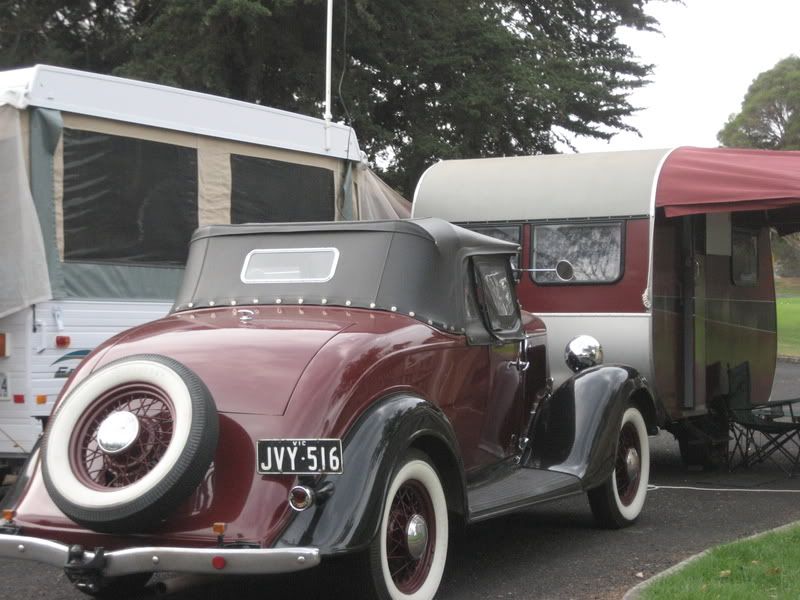  When I spoke to Lester a few years ago, he said that the chap he had bought it from had told him that it was a Hardy Van built in South Australia around 1952. However, since that date we have accumulated enough information about Hardy Vans to know that they had a very different design, and that the Hardy Van design was relatively consistent over time, as can be seen here. In addition Lester's van has aluminium side windows, the design of which would suggest that it was built no earlier than the second half of the 50's, and certainly not as early as 1952. In a number of ways, Lester's van strongly resembles the Flynn caravan shown in the advert below, apart from the curved top of the door. Perhaps that suggests that it may have been built from a Flynn kit or roll-away shell?  The origins of Lester's van has been one of the longest standing unsolved mysteries on the forum! If you are able to tell us anything more about this caravan please post on this thread using the reference number so that we can connect your post to the caravan concerned.Don Ricardo
|
|
|
|
Post by Don Ricardo on Aug 3, 2017 13:52:47 GMT 10
REFERENCE NO: UC #17Information about an unusual aluminium caravan posted by Don Ricardo on 10 March 2016:I recently received an email regarding an unusual caravan belonging to new forum member Polly, although Polly is actually the name of the caravan, not her owner - hence the question 'Who built Polly?'. The email came from Jen who wrote: "My brother, Brad who lives in Nabiac has purchased an old aluminium clad caravan which has a Jones Dolly Wheel on it.
"The story as I understand it, is that the caravan was originally purchased by a Mrs Rumbel (?) who lived on a farm somewhere out beyond Dungog. She bought it for her son to live in, which he did for many years until he passed away, when it was then stored, untouched, in a shed on the farm.
"I have attached some photos in the hope that you may be able to identify it or perhaps know someone who can? Also he needs to get work done on some of the components of the dolly wheel, and the van itself, and any advice or assistance you can render will be very greatly appreciated."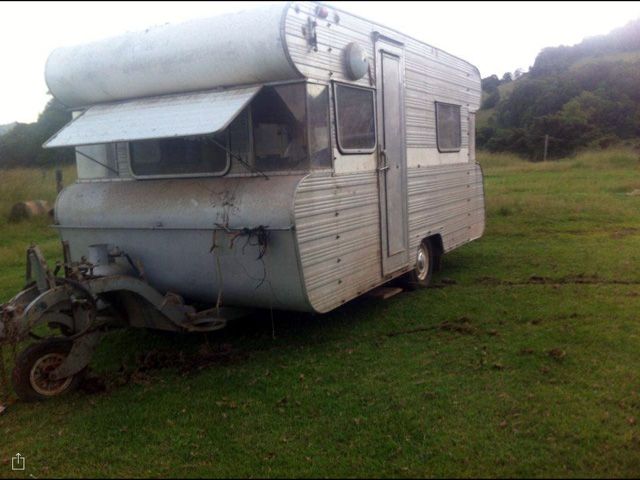 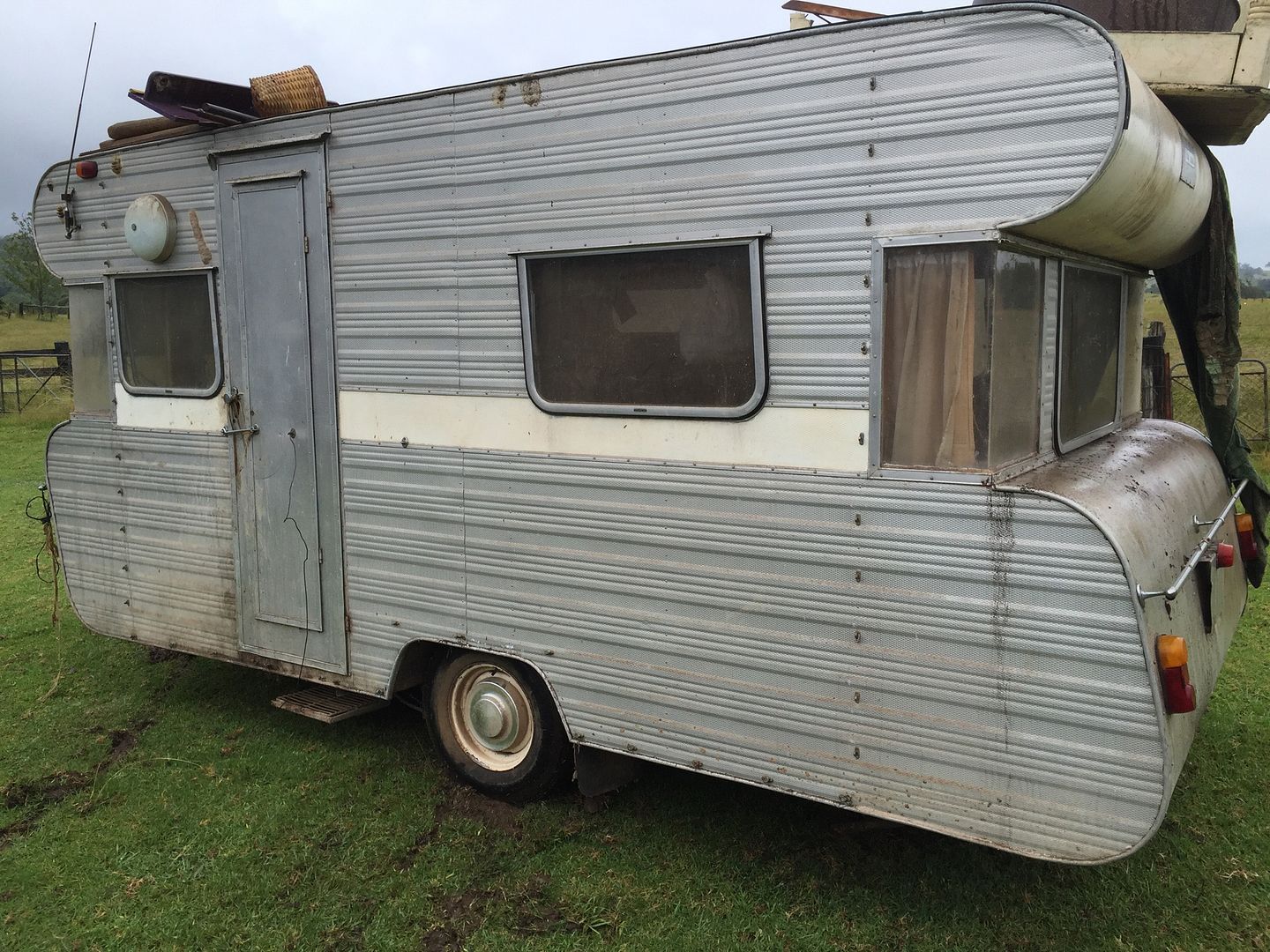  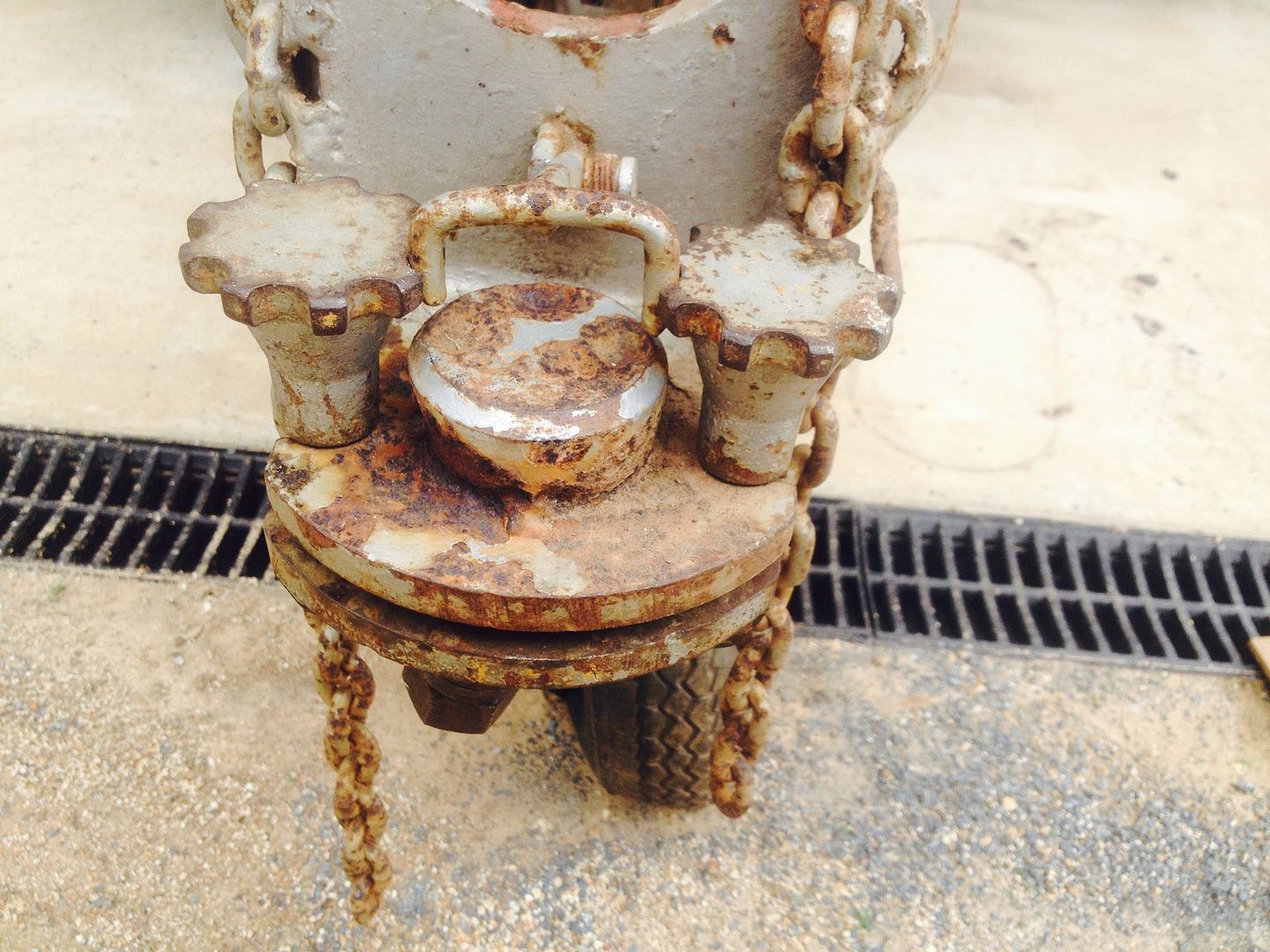  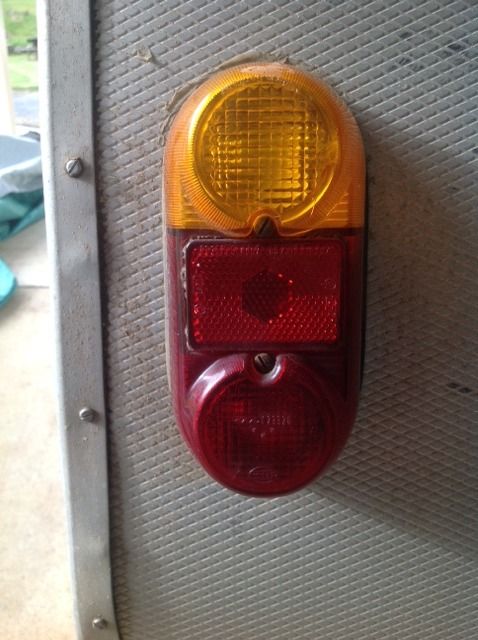 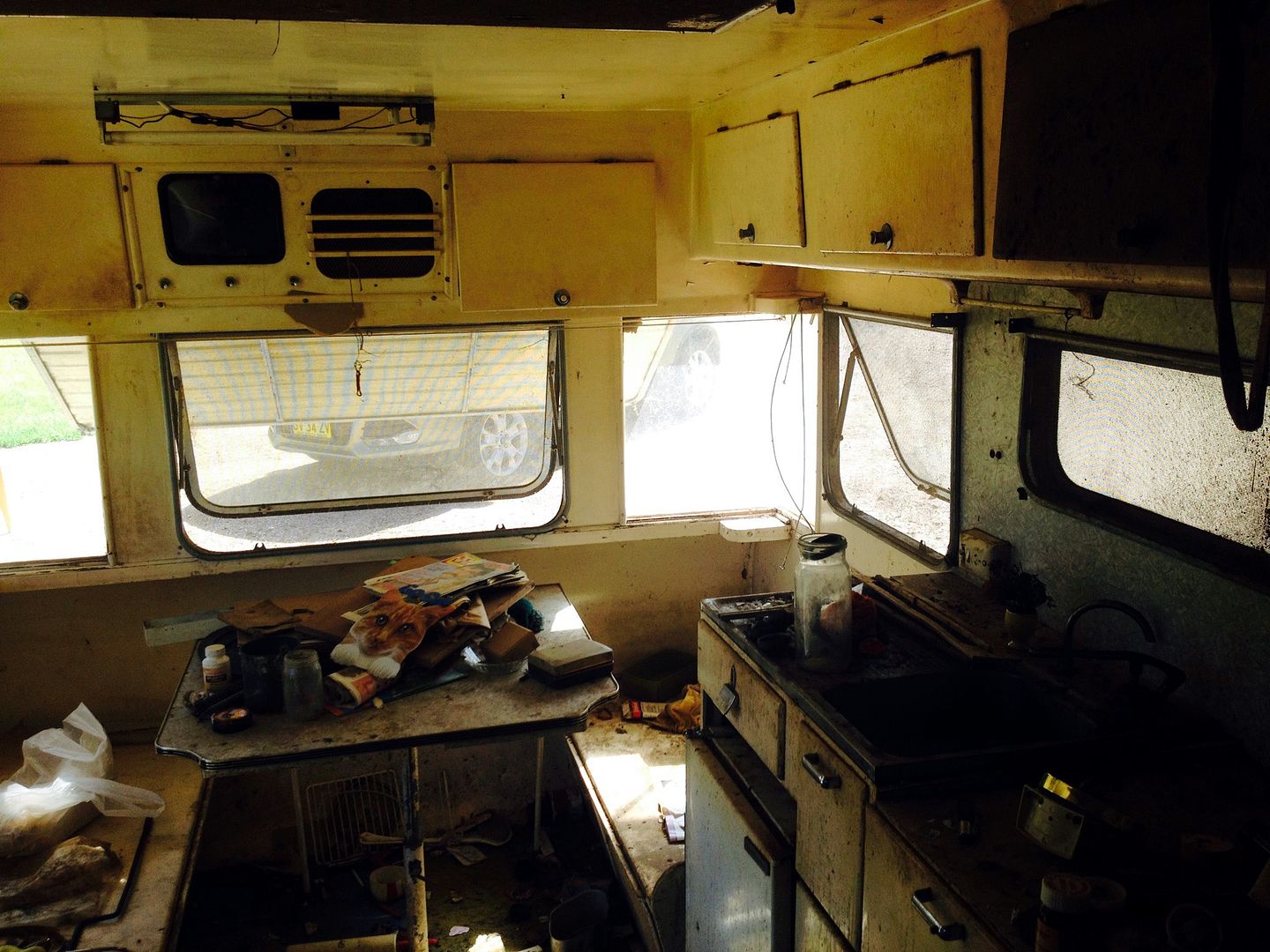 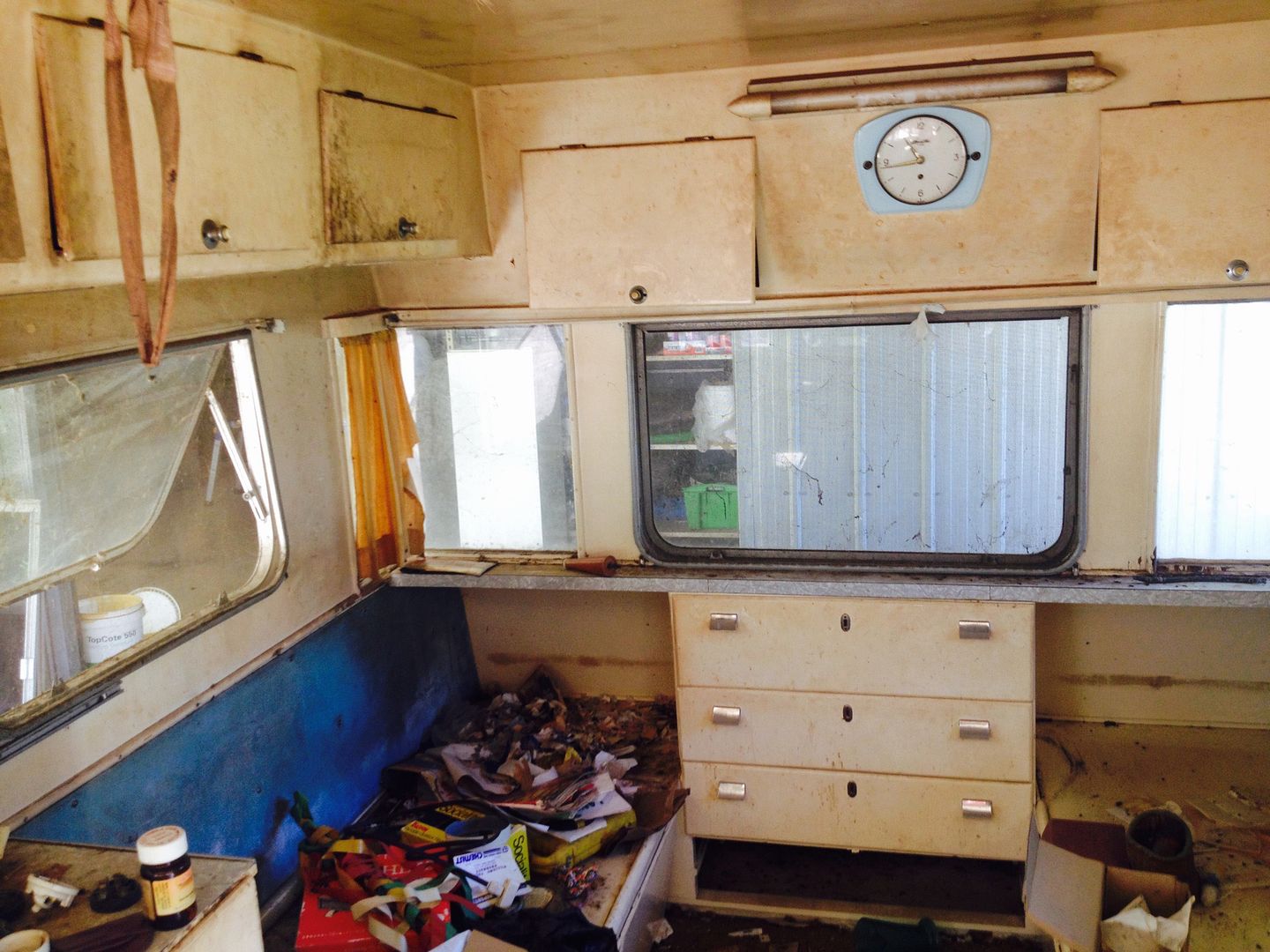 Photo showing the offside front corner. The piece of timber strengthening the corner is covered with the same laminex as the splashback in the galley and the shelf at the rear of the van: 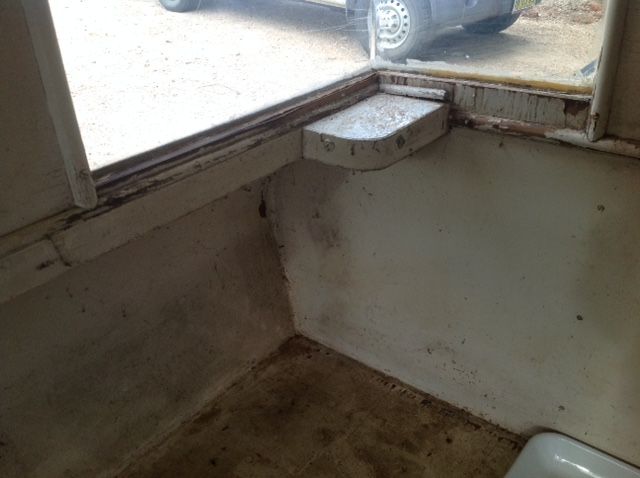 Overhead cupboard containing the electrical fuses and an exhaust fan (see reference below). Note also the gas light fitting below the cupboards:  Nearside rear below the windows:  In responding to the email, I asked Jen about the nameplate above the rear window and whether or not there were any identifying numbers on the van. She replied: "The plate says 'Belmont Caravans' and has the phone number followed by 'York' and 'Millard'...standard dealer ID?
"[Brad] cannot find a serial number anywhere on/in/under the van but yesterday found a handwritten 'H137' on an unpainted timber panel inside a cupboard near the power inlet. There is also the words 'Pacific S?' on the other side of the same outlet. Brad thinks the word could be 'Safari' but I can't make it out from the photo and I have attached copies for you. However all this could be red herring stuff.
"The dolly wheel plate has the Kingsgrove address."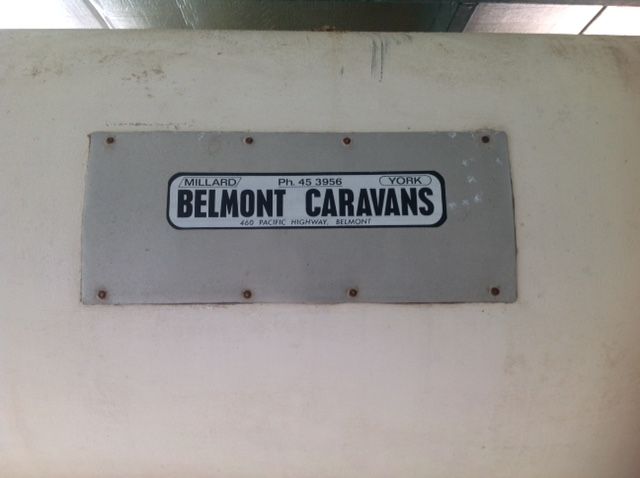 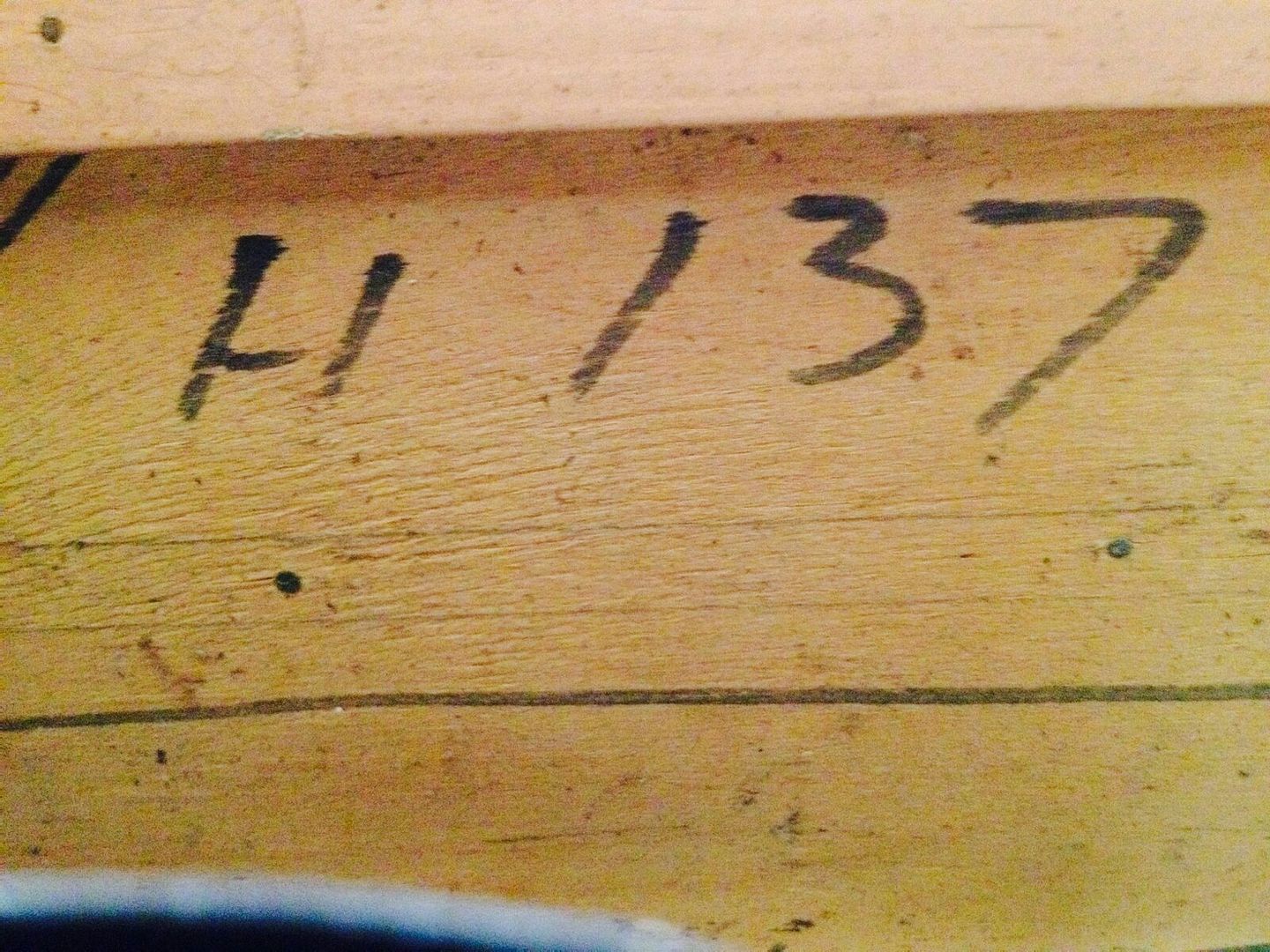 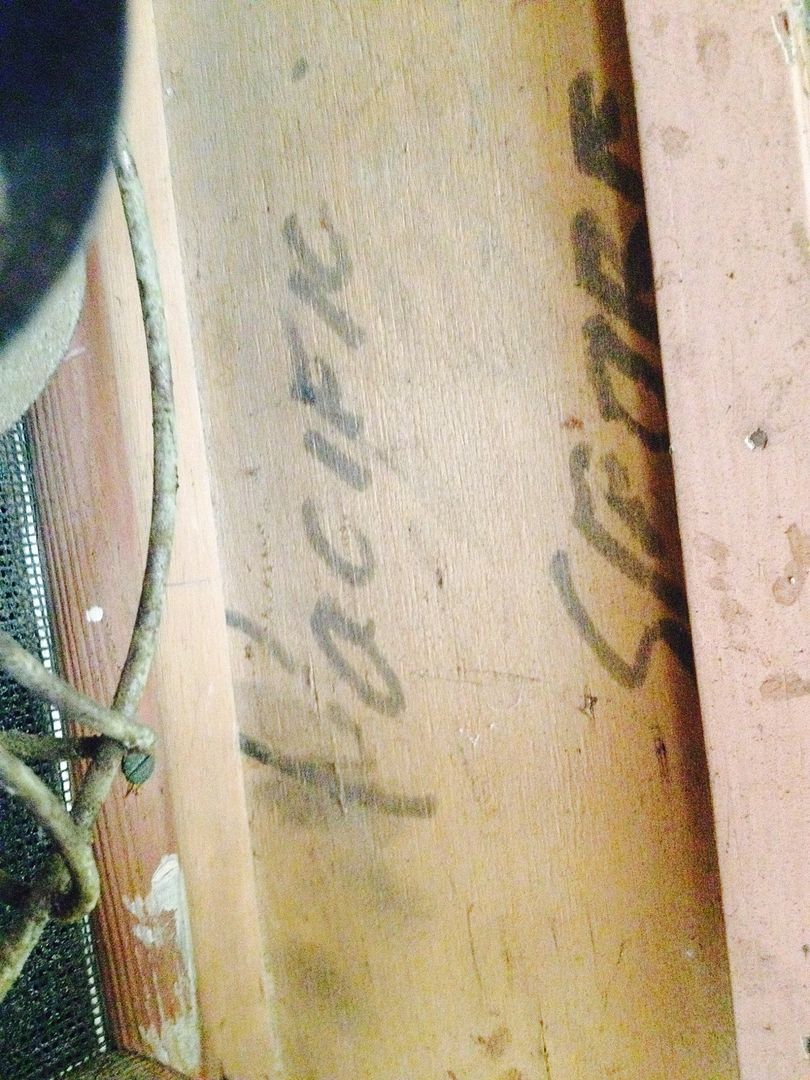 I was really interested to see the photos, because of some of the caravan's unusual design features, in particular the large bulkheads above the front and back windows, and also the large bodywork bulges below the windows - all much larger than I can remember seeing on a van before. As a result, the front and rear windows are very deeply recessed into the body. Based on the general design and cladding, etc, as well as the coloured panels on the side, my thinking is that the van would have a build date in the first half of the 60's. In addition the facts that it has a Jones Dolly Wheel and was bought by somebody near Dungog, suggests that it was very probably built in Sydney, or at least NSW. That might sound a bit obvious, but at least it helps to narrow down the number of possible manufacturers. And perhaps the number 'H137' - if it is a serial number - may indicate the van was built by a manufacturer beginning with 'H'. However, the only manufacturers in NSW we have listed with a name beginning with 'H' at this point are Hunter (which were apparently built by Fleetwind, and had a serial number beginning with 'F'), and Harvel (who apparently only built 6 caravans). Incidentally, the number and the writing 'Pacific S.....' are in the cupboard containing the exhaust fan referred to above and may or may not refer to the caravan itself. I am assuming that the 'Belmont Caravans' nameplate refers to a caravan dealer in the Newcastle suburb of Belmont, which would fit with the fact that the van was owned by someone from Dungog, located around 90 kms north of Belmont and Newcastle. However, the nameplate also refers to Millard and York. York caravans were only introduced by Millard in mid-1969, so that indicates that Polly has gone through Belmont Caravans hands sometime after mid-1969, and later than the apparent build date of the van. So presumably this means that Polly was sold second hand at that point. Note: Harvel was later ruled out as the manufacturer because their vans had inbuilt steps, and Polly does not have that feature. Further discussion regarding the origins of Polly can be found here. If you are able to tell us anything more about this caravan please post on this thread using the reference number so that we can connect your post to the caravan concerned.Don Ricardo
ADDENDUM - September 2021: Additional photos of the caravan above after it was tidied and offered for sale in October 2019 -  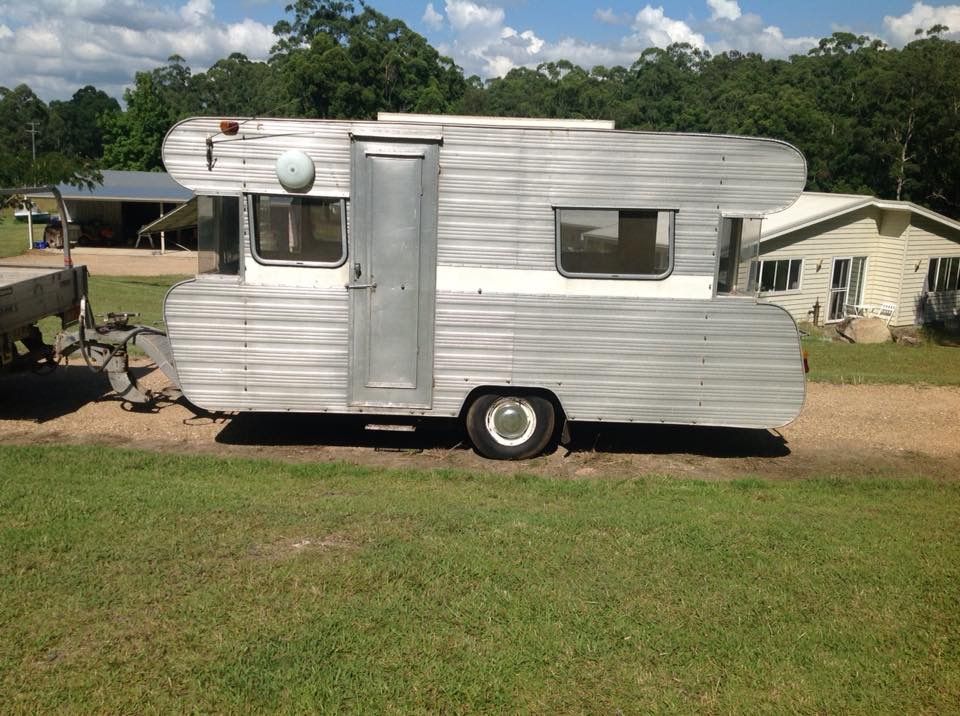 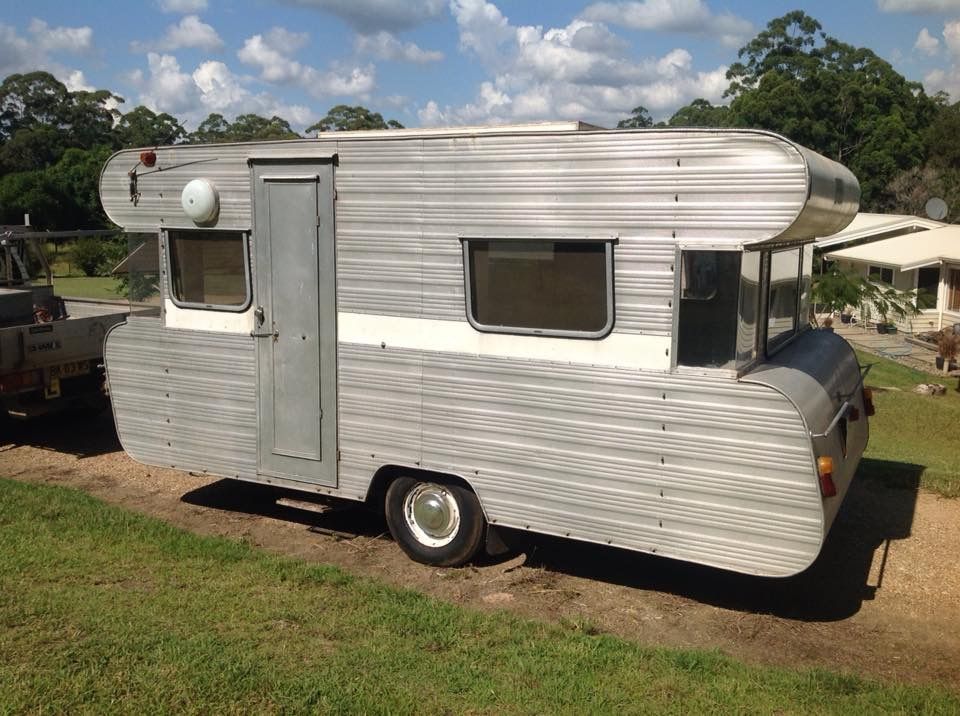 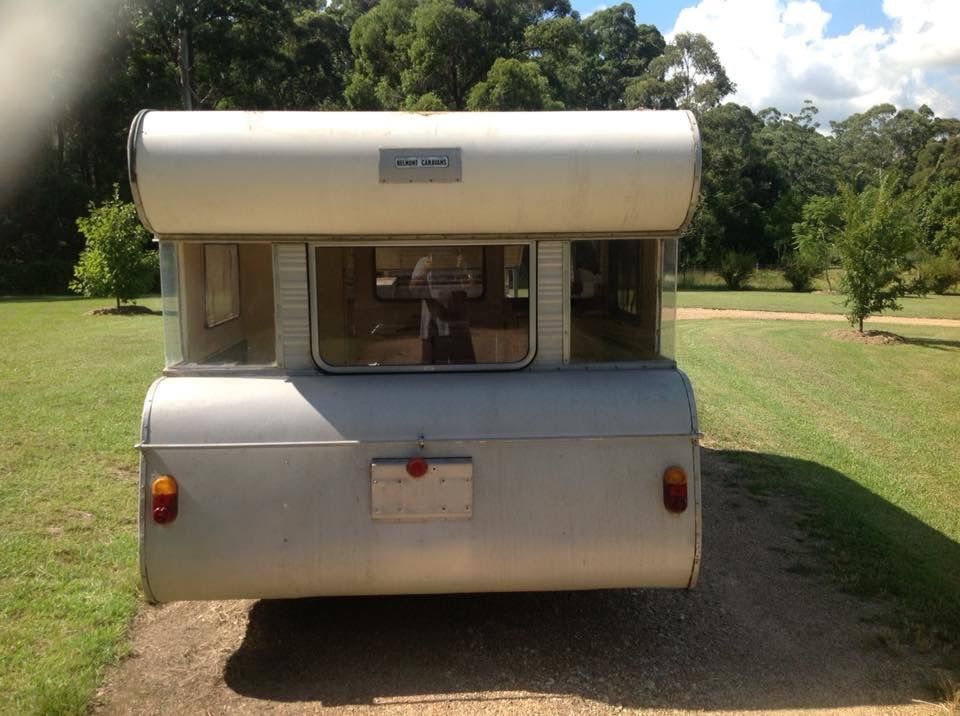   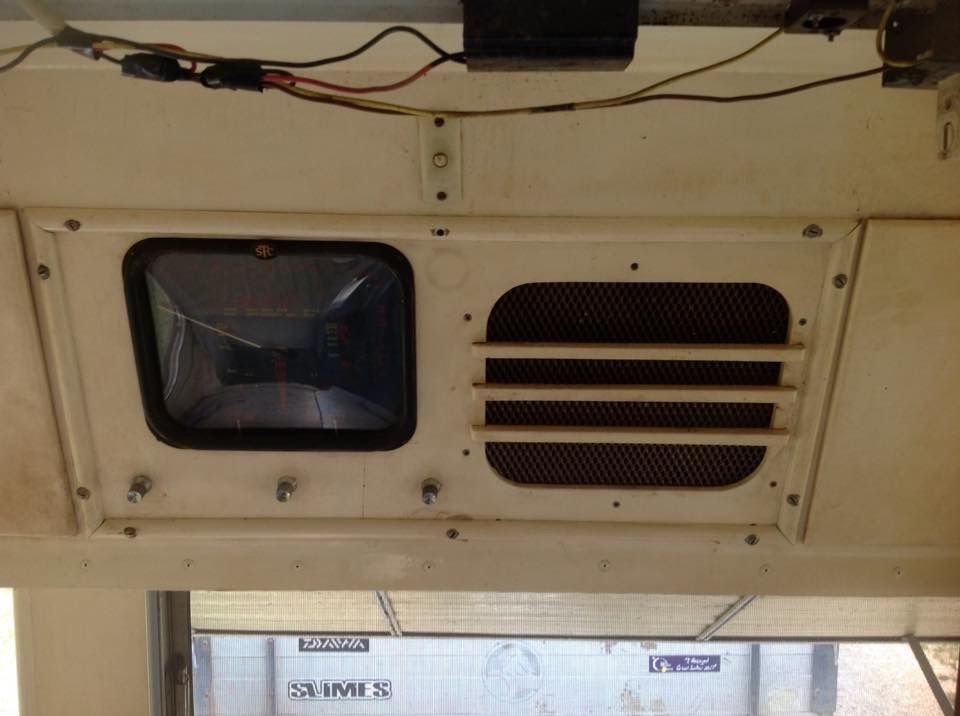 Don Ricardo
|
|
|
|
Post by Don Ricardo on Aug 26, 2017 10:12:15 GMT 10
REFERENCE NO: UC #18The photo of this caravan was posted on the forum sometime prior to 2010. I've lost track of who posted it and where, so apologies to the forum member concerned: 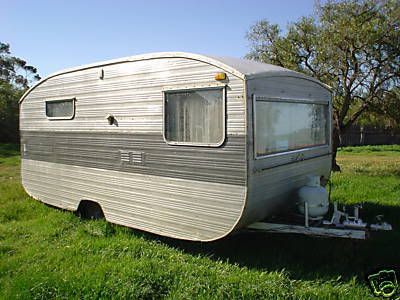 We were unable to identify the van at the time, and it has not been identified since. The double-cambered, fibreglass roof, and the profile of the aluminium cladding suggests that it was most probably built in South Australia sometime in the mid to late 60's. If you are able to tell us anything more about this caravan please post on this thread using the reference number so that we can connect your post to the caravan concerned.Don Ricardo
|
|
|
|
Post by Don Ricardo on Sept 2, 2017 15:49:20 GMT 10
|
|
|
|
Post by Don Ricardo on Sept 2, 2017 23:25:57 GMT 10
REFERENCE NO: UC #20Hi all, I'm posting this with some trepidation...partly because the van belongs (or belonged) to vintage caravan nobility...and partly because I'm challenging what has been the accepted understanding about the origins of the van for more than ten years...    Back on 6 May 2006, Ditzygypsy - who with Mark T was very involved in establishing this forum, and also sponsored the establishment of our sister Classic Caravans forum - was very excited to announce the purchase of a new vintage caravan here. Even though the van clearly had had some modifications (such as the back window), it was identified as a Rowvan: 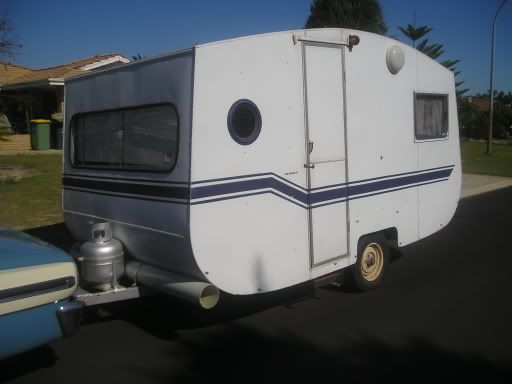 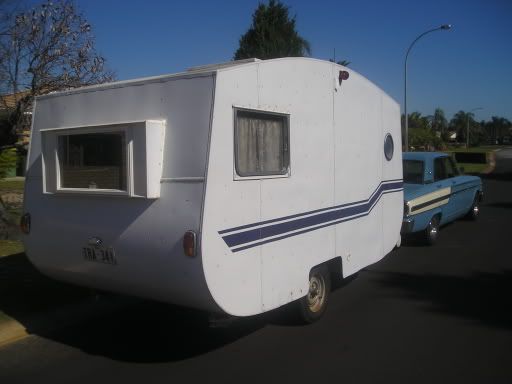 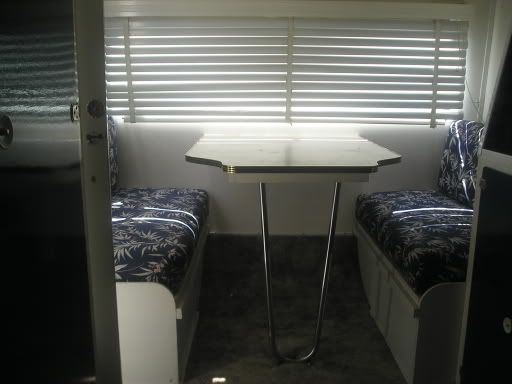 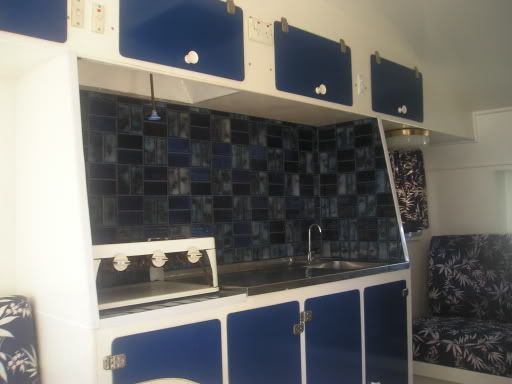 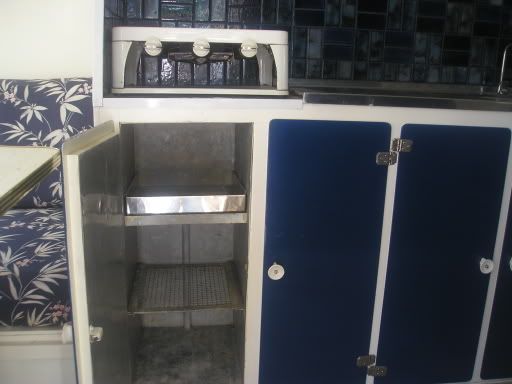 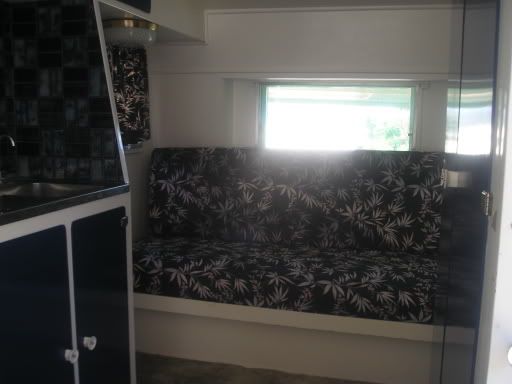 In 2006 we didn't have the mass of information about all the different vintage era caravan manufacturers we have now accumulated, and quite a few of the identifications of caravans were made on fairly spurious grounds, and have proved to be misplaced. I'm not sure what was the basis for identifying the above caravan as a Rowvan. It may simply have been what the previous owner told Ditzygypsy, or the fact that it had porthole windows. Back in the day, quite a few caravans with a porthole window were wrongly identified as Rowvans because we didn't know that there were other manufacturers who also used those windows for their vans. In the intervening years, however, we have developed a pretty good understanding of the styling of Rowvan caravans - see here - and the problem is that Ditzygypsy's van turns out to be very different to any of the Rowvans built from the late 40's through to the late 60's. Comparing the caravan shown above with the pre-1960 Rowvans, the shape is entirely different, the floorline is completely different, the shape of the wheel arch is different, it doesn't have a double cambered roof, and inside it doesn't have the usual Rowvan stove alcove or a tudor ceiling. In addition, Ditzygypsy's van is just as different to any of the post-1960 Rowvans. So if this van isn't a Rowvan, what is it? At this point the most we can say is that the van was most likely built in South Australia, based on the roofline and the angles on which the roof meets the front and rear walls, and the fact that it was found in Burra, South Australia. Any ideas on its origins are welcome. If you are able to tell us anything more about this caravan please post on this thread using the reference number so that we can connect your post to the caravan concerned.Don Ricardo
|
|
|
|
Post by Don Ricardo on Dec 4, 2017 10:09:07 GMT 10
REFERENCE NO: UC #21Photo of a caravan posted by Elvie here 14 August 2017: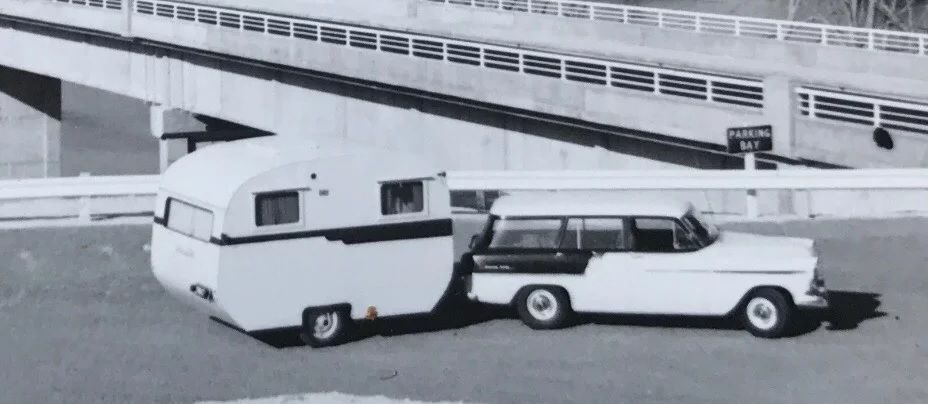 Elvie asked whether the van might be a Goodtime caravan, and the flash on the side is similar to that on some Goodtime vans, although reversed from front to back. However, the shape of the van where the front wall meets the floor, the rear window and the shape of the wheel arch differ from the Goodtimes we've seen on the forum. Clearly the photo was taken sometime from 1958 onwards because it includes an FC Holden. Pity we can't read the writing on the rear below the window.    If you are able to tell us anything more about this caravan please post on this thread using the reference number so that we can connect your post to the caravan concerned. If you are able to tell us anything more about this caravan please post on this thread using the reference number so that we can connect your post to the caravan concerned.Don Ricardo
|
|
|
|
Post by Don Ricardo on Mar 4, 2019 17:34:14 GMT 10
REFERENCE NO: UC #22Photos of a caravan Gobblelobster posted about here on 20 March 2018:  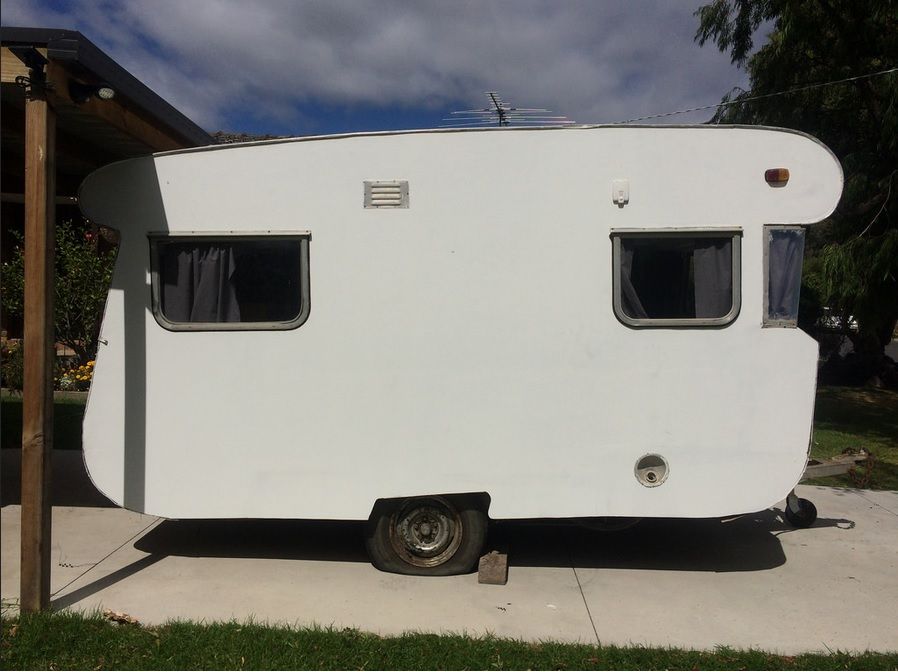 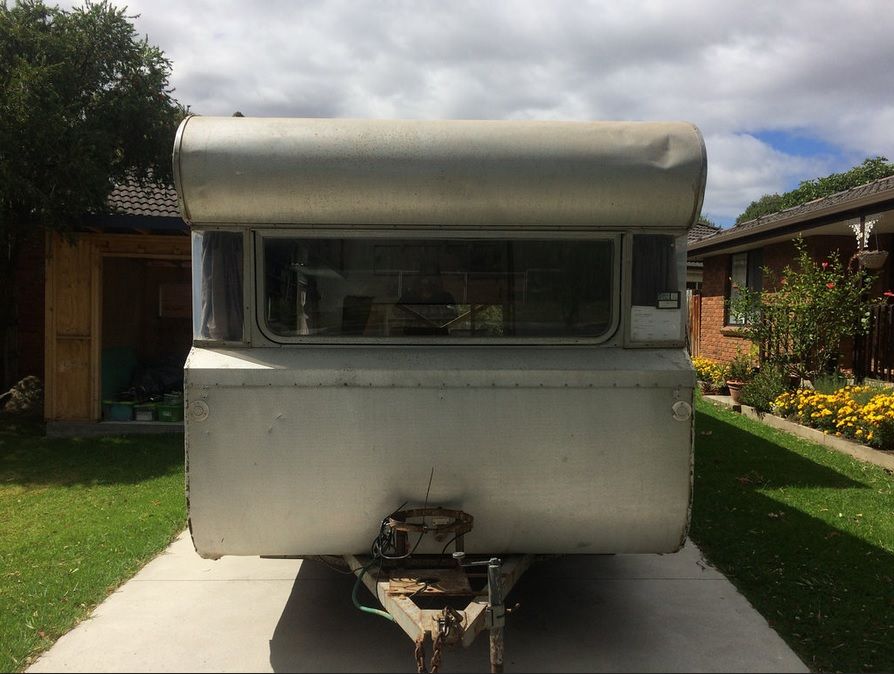 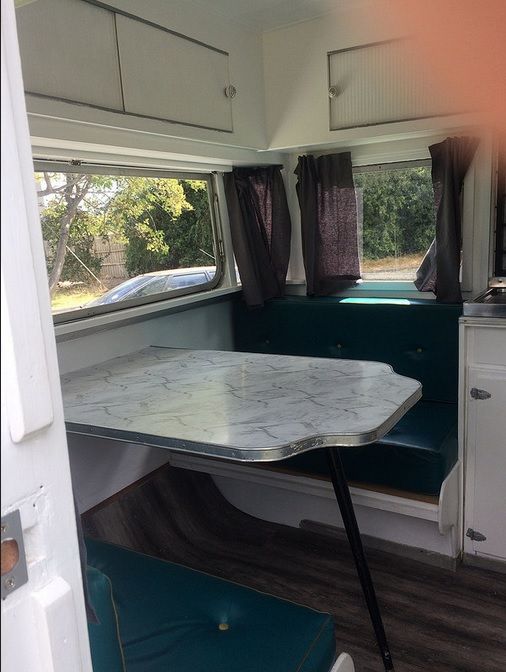 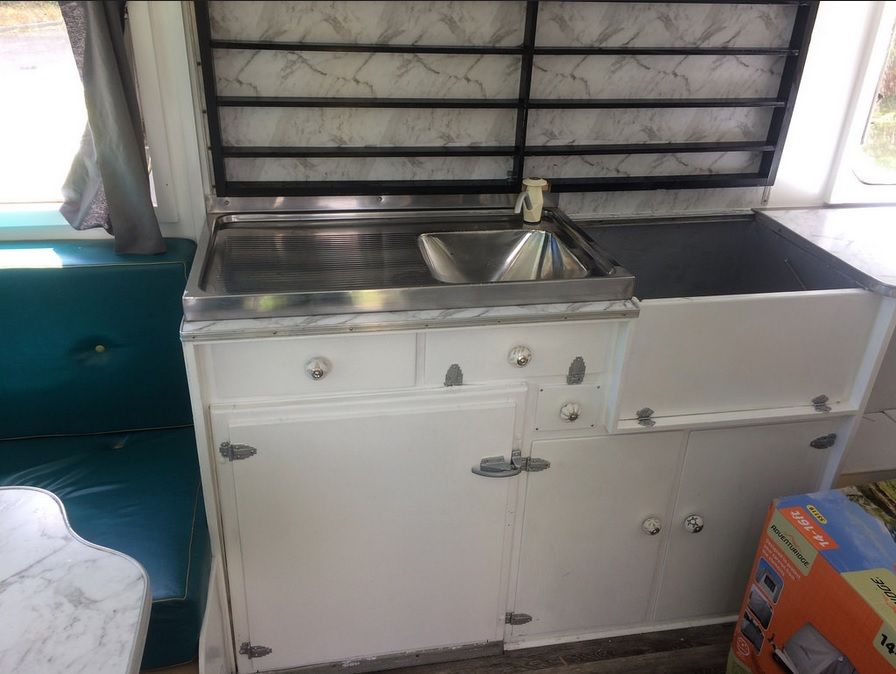 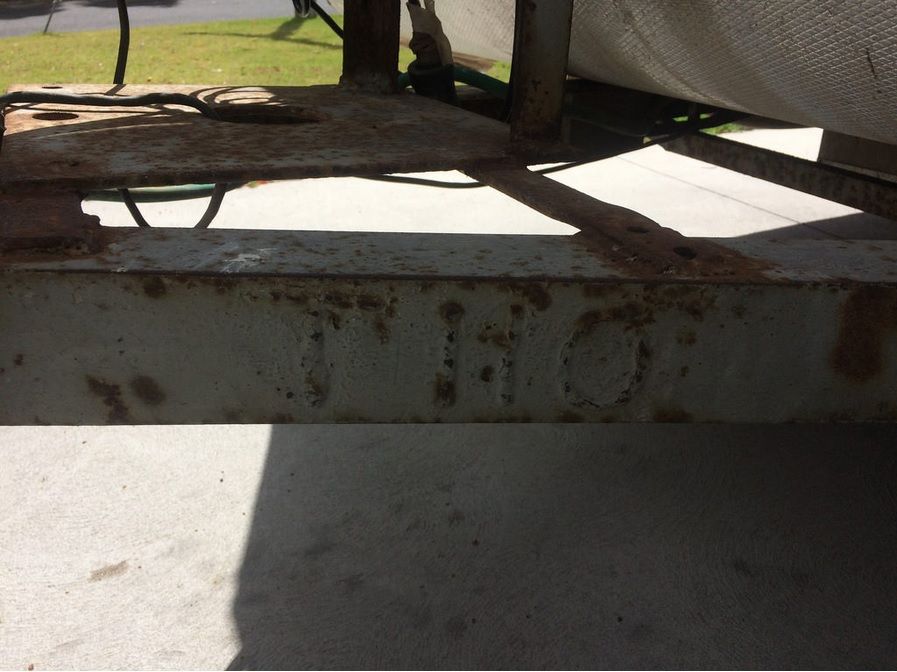  In her post, Gobblelobster said: "We have just bought a beautiful little caravan that had been partially renovated as a mobile beauty room. Unfortunately all the brand badge are missing and the only information we have to go on is what’s on the old rego sticker. So we know it was bought from Pathmaster in 1968 but it has an unusual vin number of T 110.
it has been suggested that it could be a bluebird. We would love to hear all the theory’s."Gobblelobster referred to Pathmaster, which was a caravan dealer in Shepparton, Vic, that sold vans (possibly both new and used) built by other manufacturers branded under its own name. That explains the 'Pathma' reference on the registration sticker above. No-one has been able to identify the Gobblelobster's van since she first posted. The serial number 'T110' should be a pretty significant clue, but at this point I am not aware of any manufacturer that used 'T' as a prefix for their serial numbers. Can anyone throw any light on that? If you are able to tell us anything more about this caravan please post on this thread using the reference number so that we can connect your post to the caravan concerned.Don Ricardo
|
|
|
|
Post by Don Ricardo on Dec 10, 2019 22:27:57 GMT 10
REFERENCE NO: UC #23Photos of a bondwood caravan listed on Gumtree in December 2019:        And a beautiful photo of the van in its heyday:  According to the seller, the van has been in the one family since 1938, has been kept under cover for the last 40 years, is 13 ft 6 in long, and has a serial number of '932'. The seller is based in Kyabram, Victoria. These statements tell us a few things. First, the van was built in 1938 or earlier. Certainly the overall shape and the design of the windows suggests a pre-War origin. Note also the slotted wheels typical of the period. Second, if the van has been in the hands of the one family since 1938, and if they are based somewhere around Kyabram (and we don't know that for sure), that would suggest that the van was built somewhere in Victoria, because caravan sales up to the 1950's were usually very localised. Third, if the serial number is '932' that would suggest that the van was built by a fairly large scale manufacturer, not just a home builder or small backyard operation. There weren't a lot of Australian manufacturers that would have built almost 1,000 caravans by 1938. The only likely candidates that I can think of are Land Cruiser and Caravan Park, but this van doesn't look like any of the models produced by those two firms. So I wonder what the origins of this van are? If you are able to tell us anything more about this caravan please post on this thread using the reference number so that we can connect your post to the caravan concerned.Don Ricardo
|
|
|
|
Post by Roehm3108 on Dec 11, 2019 6:40:01 GMT 10
REFERENCE NO: UC #23
Hi DonR. I believe that this is a home-built caravan. I think that the "build number" is actually a chassis number ID from the rego papers. If it is of that vintage it may even be the original rego number. I notice there is what looks like a rego sticker on the front window, perhaps the seller could tell us what is on that, if it's legible.
Sadly, this van was sold to the seller as a "Don", which only deepens the mystery.
|
|
|
|
Post by Don Ricardo on Dec 11, 2019 22:12:20 GMT 10
REFERENCE NO: UC #23
Hi Roehm,
The van may indeed be homebuilt, but the shape of the van is not dissimilar to some commercially manufactured caravans of the 30’s. There were several manufacturers who also had similar shaped windows to the Gumtree van, including Windmill and Brewer. So there’s a possibility that the Gumtree van was built by some commercial builder we don’t know much about, ie we might know they were around but not seen any of their vans before.
I agree with your comment about the serial number. It does seem too high to be credible as an actual serial number, from what we know about 30’s manufacturers and production numbers at this point. The number 932 can’t be an original rego number for the van though I don’t think, because vans didn’t have to be registered back in the 30’s, so there would be no number to draw on. The rego sticker must be much later than the van itself, because in the case of Victoria registration wasn’t introduced until 1967 and there would have been no sticker before that. Vans did have to be registered a bit earlier than that in other states, but not too much earlier I don’t think.
Don Ricardo
|
|
|
|
Post by Don Ricardo on Jul 25, 2020 21:59:51 GMT 10
|
|
|
|
Post by Don Ricardo on Jul 27, 2020 15:09:29 GMT 10
REFERENCE NO: UC #25Photos of an unidentified van seen by Aza in Western Australia a few years ago and posted on his Just Retro Caravans Facebook page in May 2020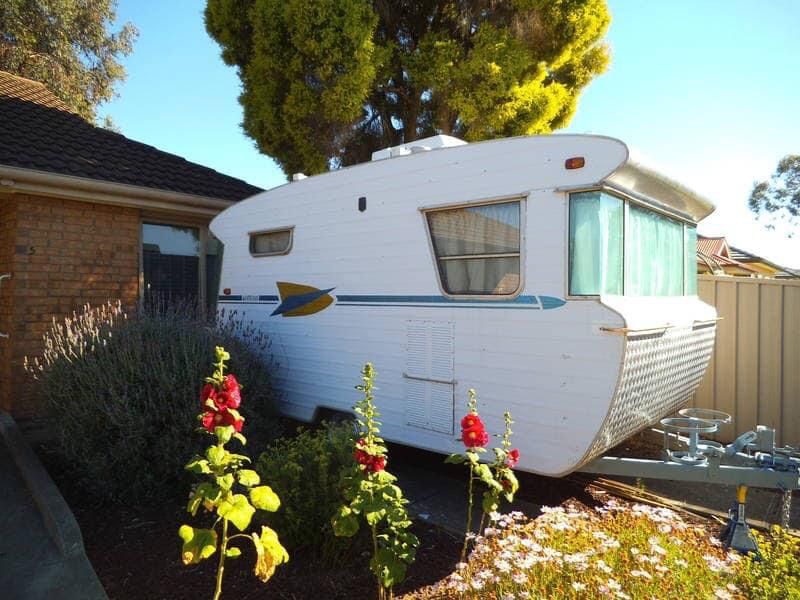 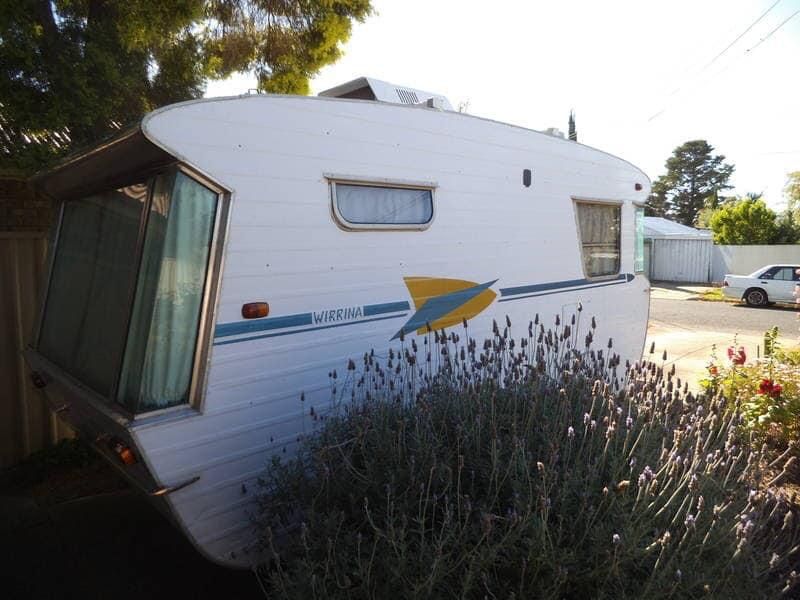 The style and shape of the windows suggest to me that it was produced after the vintage era (ie post-1969), but it is such an interesting van I thought I'd post the photos anyway in the hope someone may be able to tell us something about it. I've checked 'Wirrina' but haven't come up with anything out of that - it sounds like it could possibly be an Indigenous word? There was a suggestion on Facebook that the van had been imported from New Zealand, mainly because of the windows. However my vintage caravan colleagues there told me that they didn't recognise it, and the cladding was only used for a very brief time in New Zealand on caravans that don't match this van in any way. If you are able to tell us anything more about this caravan please post on this thread using the reference number so that we can connect your post to the caravan concerned.Don Ricardo
|
|
|
|
Post by Don Ricardo on Jul 29, 2020 15:48:47 GMT 10
|
|
|
|
Post by Don Ricardo on Aug 3, 2020 16:26:12 GMT 10
|
|
|
|
Post by Don Ricardo on Aug 5, 2020 12:25:27 GMT 10
REFERENCE NO: UC #28Photos of a South Australian-built caravan posted in a number of places on Facebook and elsewhereThis caravan which attended some national and many South Australian Vintage Caravans events has intrigued me for a number of years. The previous owner, Robyn, understood that it was a 1948 Rowvan, hence 'Rowvan' being signwritten across the front. I'm not sure what Robyn's understanding was based on, but I am almost certain that it isn't a Rowvan, and fully certain that it is not a 1948 Rowvan, for reasons I will explain below. But first the photos:  I love the above photo, partly because of the Wolseley tow vehicle, however the photo also shows a very unusual feature of this van - the double opening hatches in the door, upper and lower, which effectively turns the main door into a screen door. 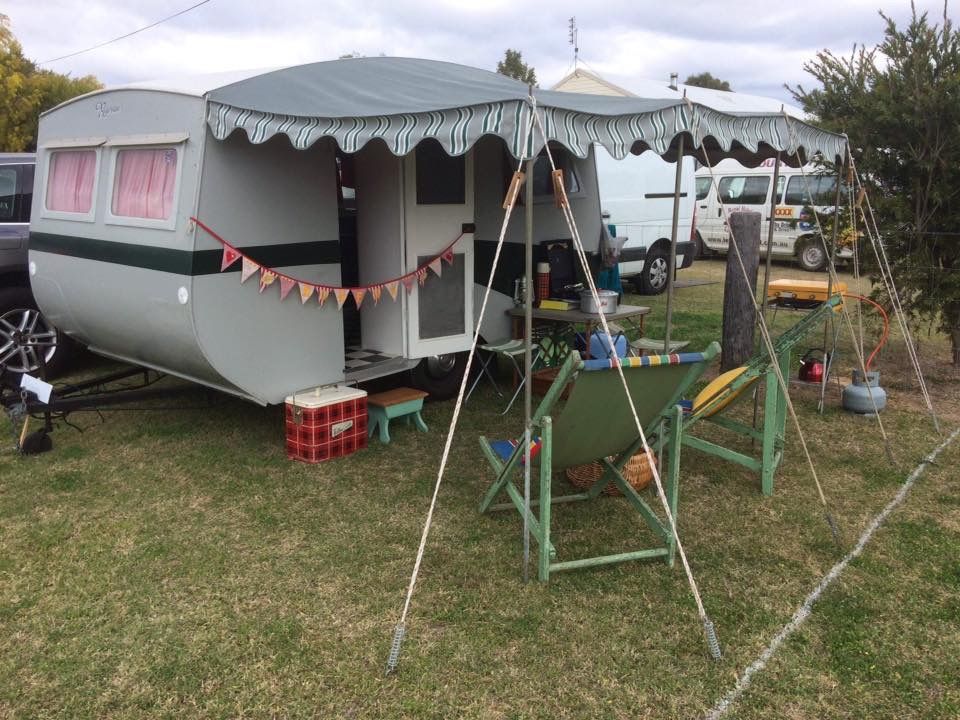 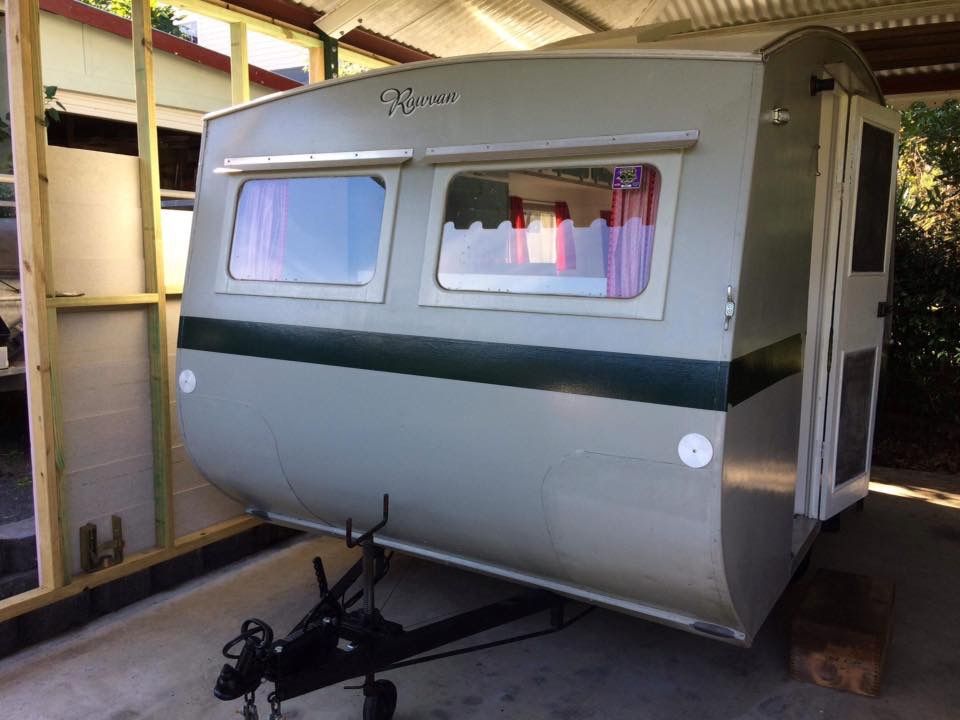 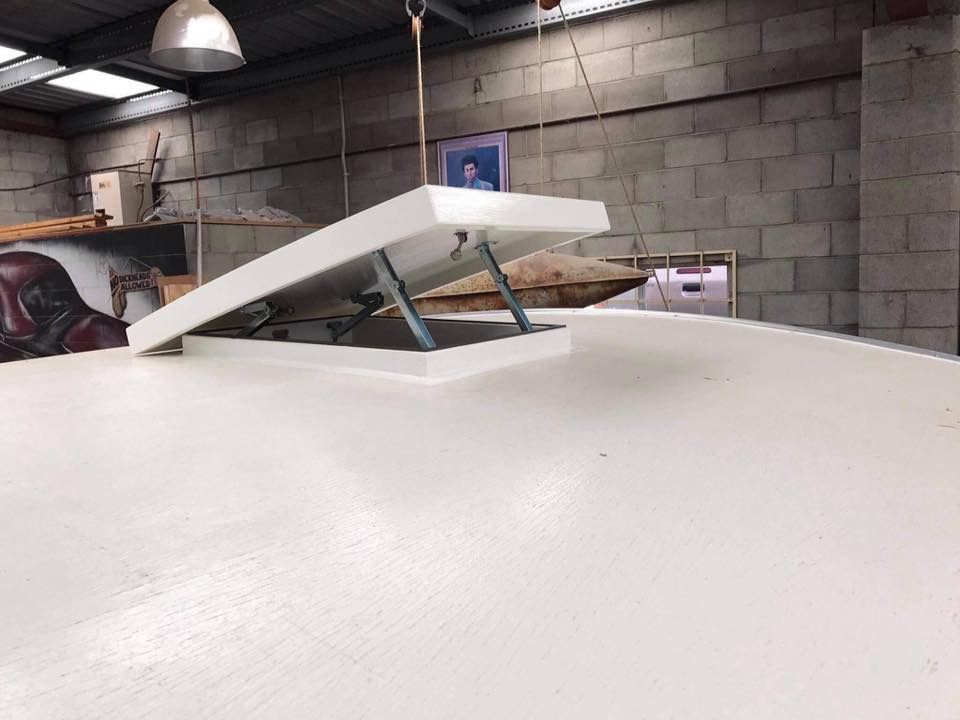 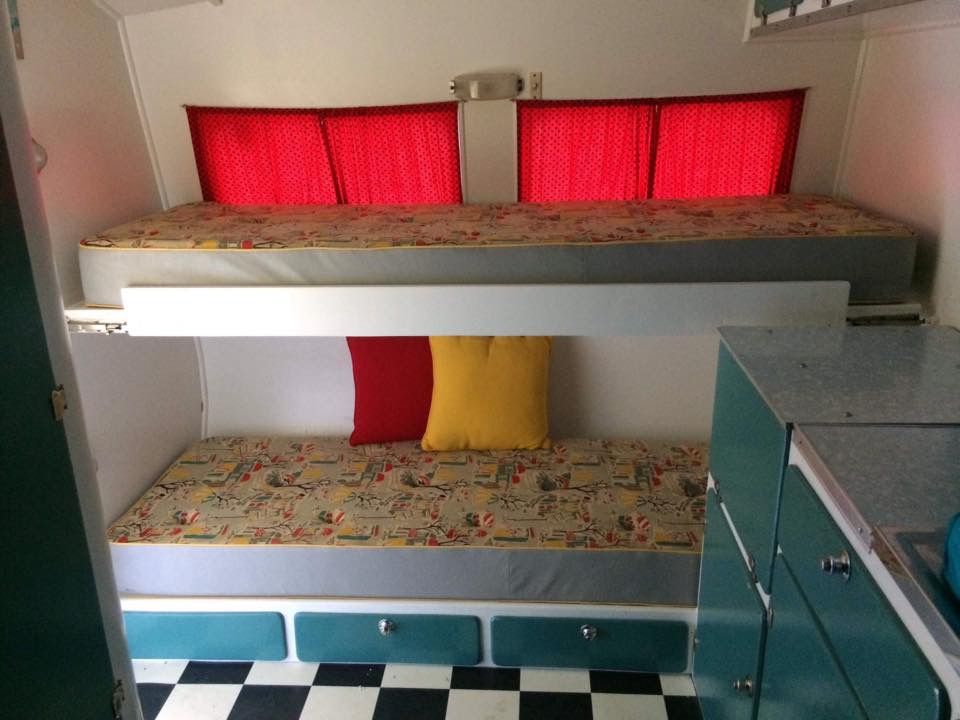 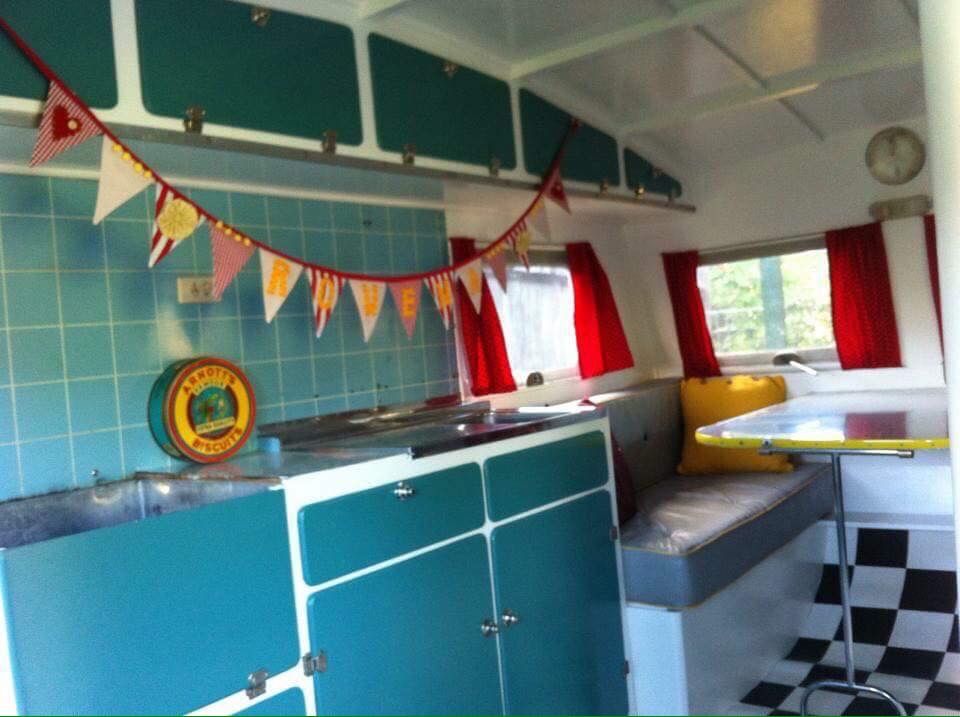   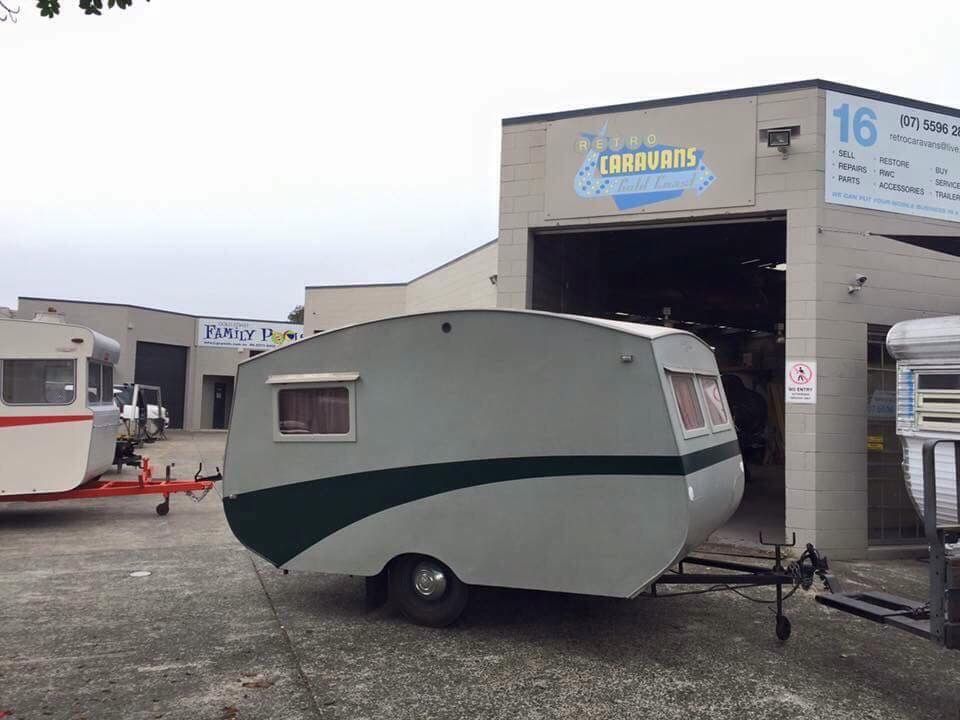 The van was sold by Robyn some months ago and has now been repainted and is being re-sold on online auction sites as 'Gerry'! (For a while I thought I'd found a second example of the above van.    ) The van in the photos shares a number of features with late 40's & 50's Rowvans, namely a double cambered, canvas covered roof and a Tudor ceiling which indicate that it was almost certainly built in South Australia. However, the van differs from Rowvans in a number of ways. One difference is in the shape of the van. I have posted the photo of the side profile of the van last so that it can be compared with the photo of a very early 40's Rowvan owned by Vantoura below: 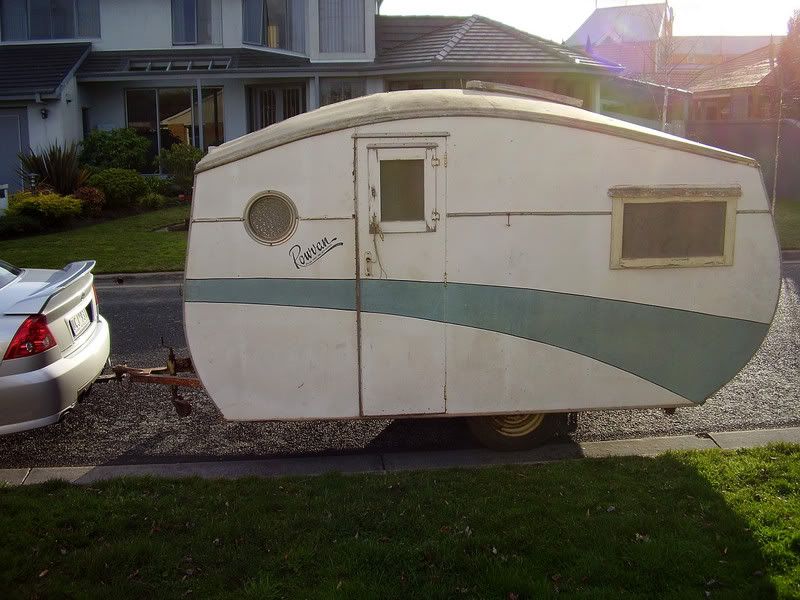 Some of the difference between the vans evident from comparing the photos are: - The front of Robyn's van (as I will call it) has a much greater curve than the Rowvan. As a result both the top section and bottom section of Robyn's van are on a greater angle than the Rowvan.
- At the back the widest part of the curve on Robyn's van is about one-third up from the floor level, whereas on the Rowvan it is about half way up.
- The highest part of the roof on Robyn's van is about the mid point of the length of the van, where on the Rowvan it is about one-third the way from the front.
- Robyn's van has a semi-circular external wheel arch, while the Rowvan has no external wheel arch at all.
- The hatch on Robyn's van appears to be located at the mid-point of the roof, whereas on the Rowvan it is located behind the mid-point of the roof.
- The door on Robyn's van has the double opening hatches with solid hatches, while the Rowvan has a quite small opening in the upper door with the hatch consisting of a small glass window.
- Robyn's van has no windows of any sort on the sides at the front, whereas Rowvans have porthole windows on the 12 ft models and only lack a porthole window on the 10 ft model which has a very short distance between the left hand edge of the door and the front of the van.
Some other major differences between Robyn's van and the Rowvans are as follows: - Robyn's van does not have the distinctive stove alcove with side walls that is a feature of all 40's and 50's Rowvans.
- Robyn's van has several more head high cupboard doors on the off side (galley side) of the van than do Rowvans.
Further comparisons between Robyn's van and Rowvans can be made by looking at the Rowvan history thread. After talking to the Rowes who built Rowvans, Vantoura has stated that the Rowes outsourced the construction of some of their vans to other people because they couldn't keep up with demand. As a result not all Rowvans look exactly the same. Nevertheless the overall style of the Rowvans from the 40's through to the late 50's seems to have been pretty consistent and to have maintained some quite distinctive features, such as the stove alcove and shape of the van. Robyn's van has so many differences it doesn't seem likely that it was built to the Rowvan plan. On the basis of the above, it seems likely that Robyn's van was built by another South Australian manufacturer. We know enough about some South Australian caravan builders who built similar style vans, including Adventurer and Broadway, that we can say that Robyn's van wasn't built by them. However, there are also quite a few other South Australian manufacturers that we know virtually nothing about, apart from their names: Corlett, Engel, Lessur Van, Midlander, Regal, Ritter-van, Scenic, Streamlite and Viking. Perhaps they are responsible for the caravan shown above.
I am really interested in whether anyone can throw any light on this particular mystery.
If you are able to tell us anything more about this caravan please post on this thread using the reference number so that we can connect your post to the caravan concerned.
Don Ricardo
ADDENDUM - September 2021:. As mentioned above, after sale by Robyn, the caravan was given a new paint job, re-named ‘Gerry’, and put up for sale again via Gumtree: 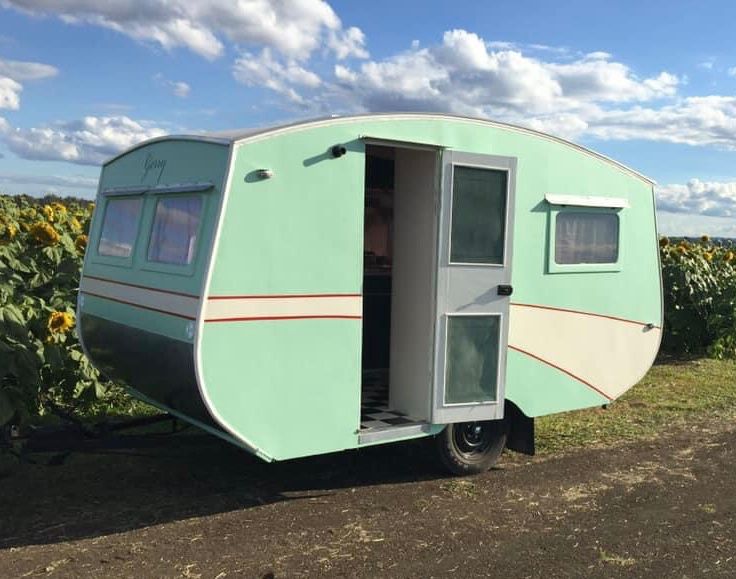
|
|
|
|
Post by Don Ricardo on Aug 11, 2020 0:06:00 GMT 10
REFERENCE NO: UC #29 Exocet's 1952 12ft caravan "Dorothea" In February 2007 forum member Exocet told us about his 12ft 3in bondwood caravan here. At one point the van was known as "Dorothea", and she was used to the limelight long before Cobber's Driftwood became a bondwood celebrity. As you can read in the link, Dorothea appeared in a promotional procession for the 1994 Melbourne caravan show, and also appeared in an ABC Collectors program. When he told us about his van, Exocet asked if anyone could identify it, but at that point we didn't have as much information about different makes of caravans and there were no suggestions about who might have built Dorothea. A lot of time has passed and it's probably a while since anyone looked at Exocet's thread. Even so the make of his caravan is still a mystery, so I thought I'd put up some photos again and see if anyone can identify it. There are some more photos of the van, including in it's earlier "Dorothea" guise and with a little canvas canopy front and back in Exocet's thread.
The following photos are from the Lloyds Auction website in April 2018 when it was advertised for sale. The van was advertised by Lloyds as a 1952 Capricorn, but I don't think Capricorn came into existence until the mid-60's. It appears from Exocet's posts that the original owner of the van was a Victorian, so that means there is a good chance that Dorothea was built by some manufacturer in that state.
The windows on each side at the front of the van are fixed and non-opening. Note how the roof slopes down to the rear: If you are able to tell us anything more about this caravan please post on this thread using the reference number so that we can connect your post to the caravan concerned. Don Ricardo |
|
|
|
Post by Roehm3108 on Aug 11, 2020 7:45:25 GMT 10
UC#28
Hi DonR
This van has been in a few discussions over the past couple of years on other forums and I think is advertised for sale again. It's the same van as the second van on page 1 of the 1940's caravans in DHL (battleship grey colour). It is definitely not a Rowvan.
|
|
|
|
Post by Don Ricardo on Aug 11, 2020 10:33:13 GMT 10
UC #28
Hi R3108,
Thanks for that response. And you're right, it is currently for sale again via Facebook.
I haven't seen the discussions about the identity of the van on other forums. Have their been any suggestions made or conclusions drawn?
Not only am I sure, like you, that it isn't a Rowvan, I'm sure it's not 1948 either. That's based on the style of the van as well as the construction of the windows which have the curved inner corners.
Don Ricardo
|
|
|
|
Post by Don Ricardo on Aug 12, 2020 11:07:42 GMT 10
REFERENCE NO: UC #30Unidentified caravan listed on Gumtree in March 2018The van was described by the seller as a '1960 Adventurer', but it doesn't look like any Adventurer we've seen thus far. I'm guessing that it may be a South Australian built van because that's where the seller was based. The caravan does have an early 60's look to it, but I am thinking that the double awning windows, front and rear, were probably a later addition.   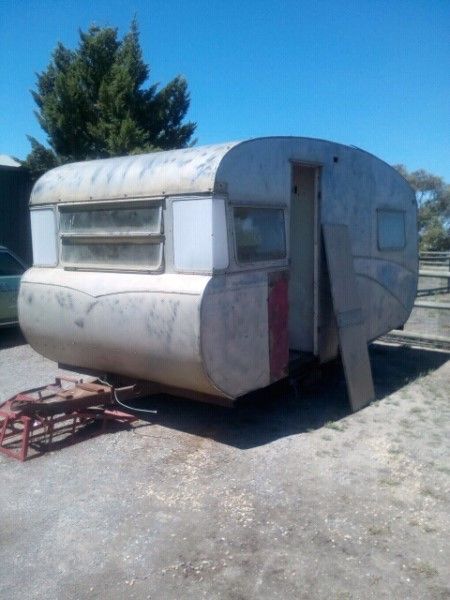  The inside of the caravan was pretty much trashed, but I'll include some photos just in case some of the remaining fittings contain any clues as to the van's origins. 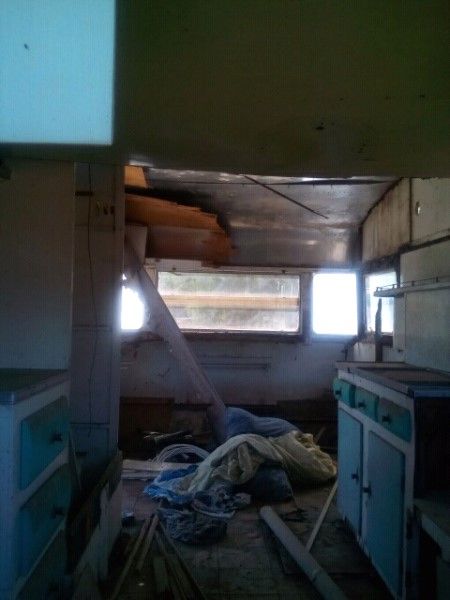 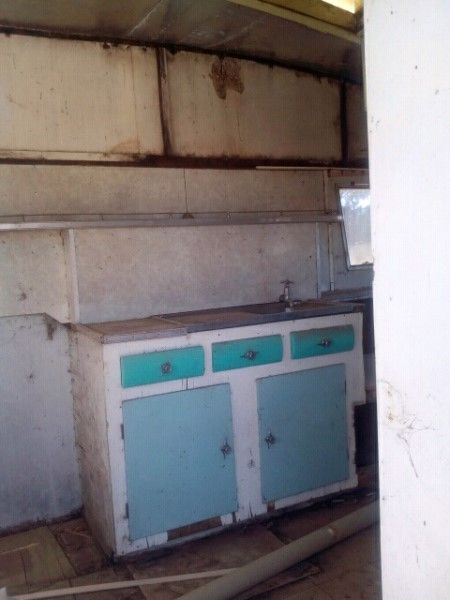 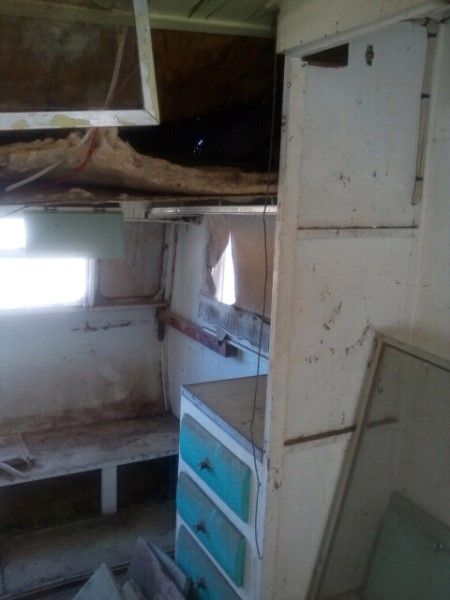 The only other comment I've got to make is...wow, didn't a few manufacturers in the 60's produce some vans with outsized fronts (and fin some cases, rears)! If you are able to tell us anything more about this caravan please post on this thread using the reference number so that we can connect your post to the caravan concerned.Don Ricardo
|
|
|
|
Post by Don Ricardo on Aug 24, 2020 15:27:09 GMT 10
REFERENCE NO: UC #31I posted photos of this interesting van in March 2016 but nothing has emerged about its origins since, so I thought I'd re-post it on the 'Yet To Be Identified' thread to see if we can uncover any information about it. Morning all, At the recent Maldon Vintage Caravan Weekend, there were several caravans the identity of which was a mystery to both their owners and anyone else that was there. One of them belonged to Ian and Sharon: 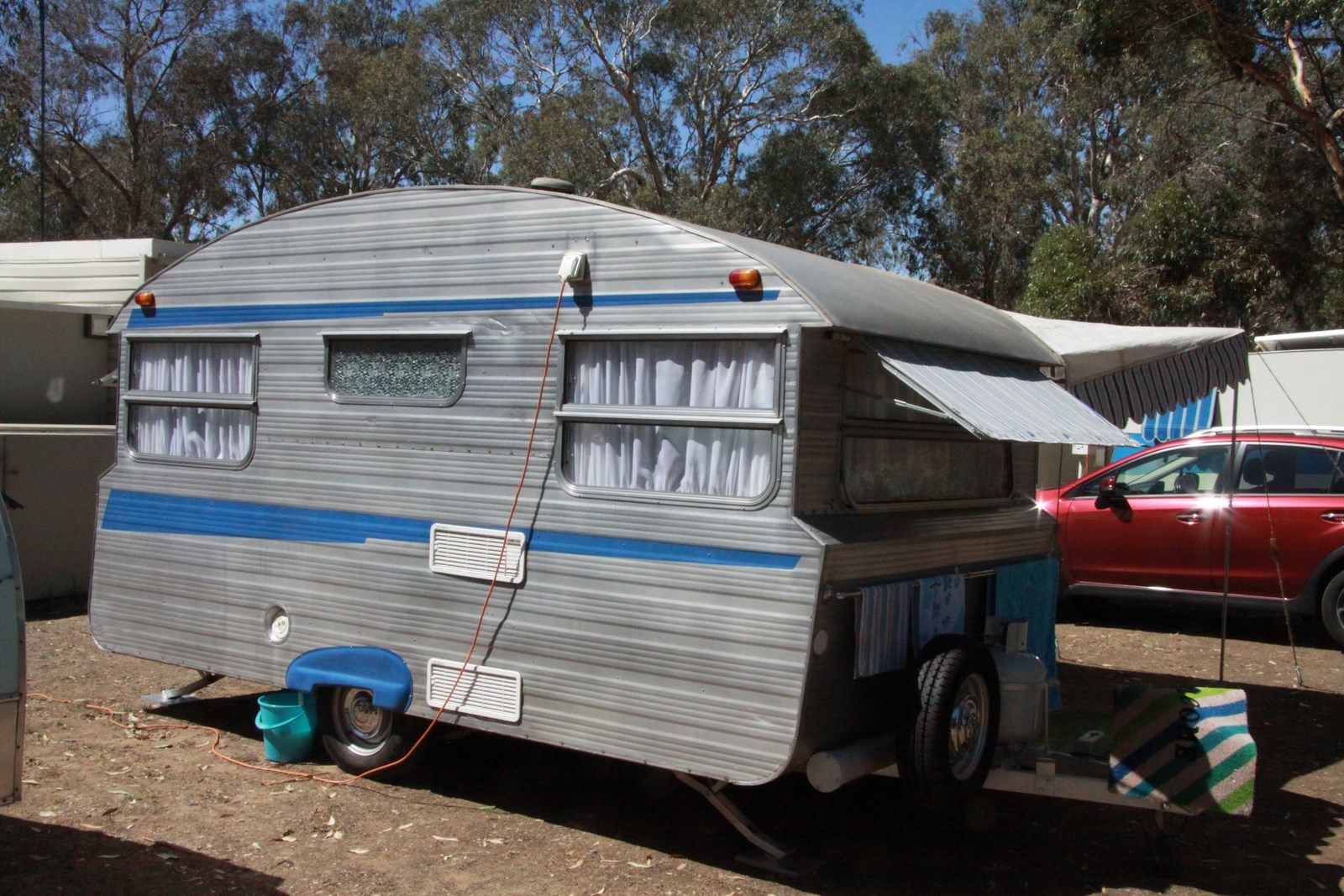 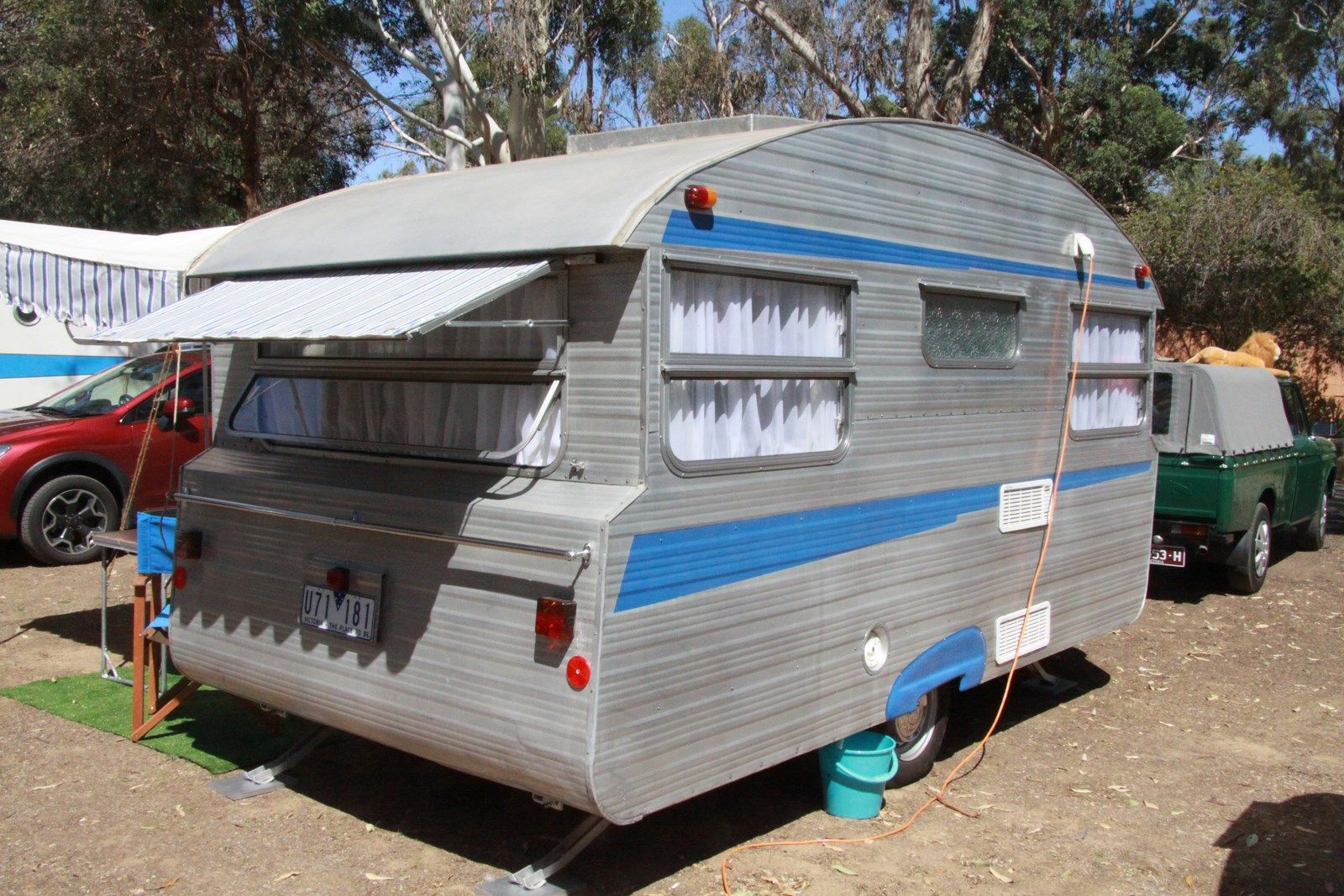 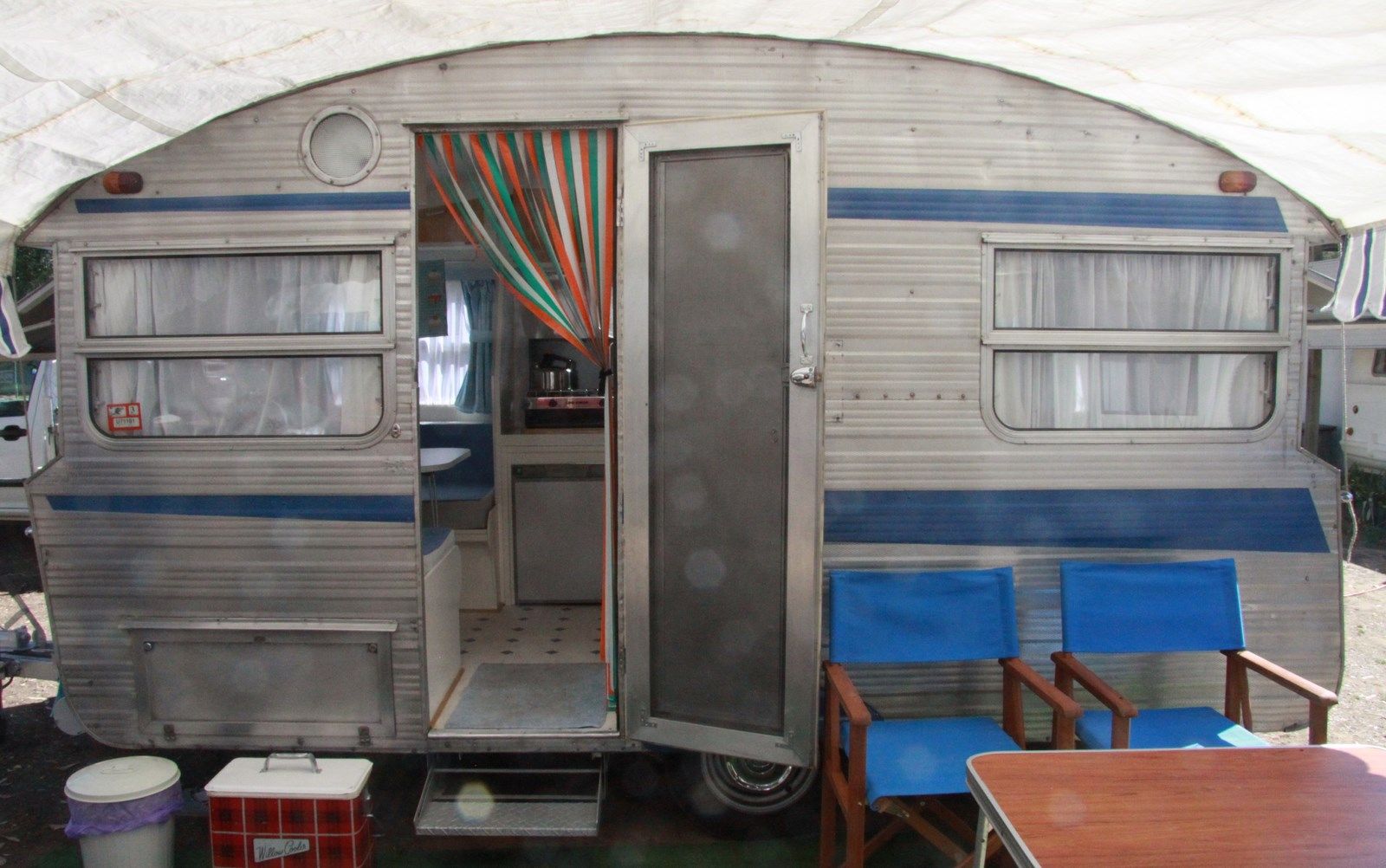 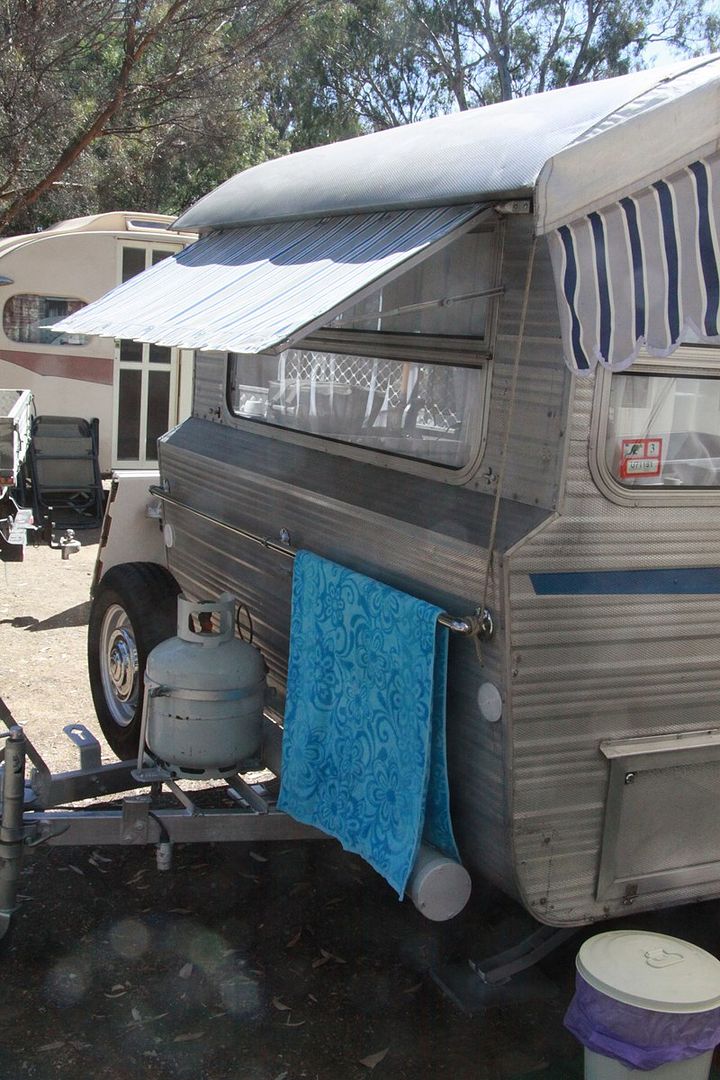  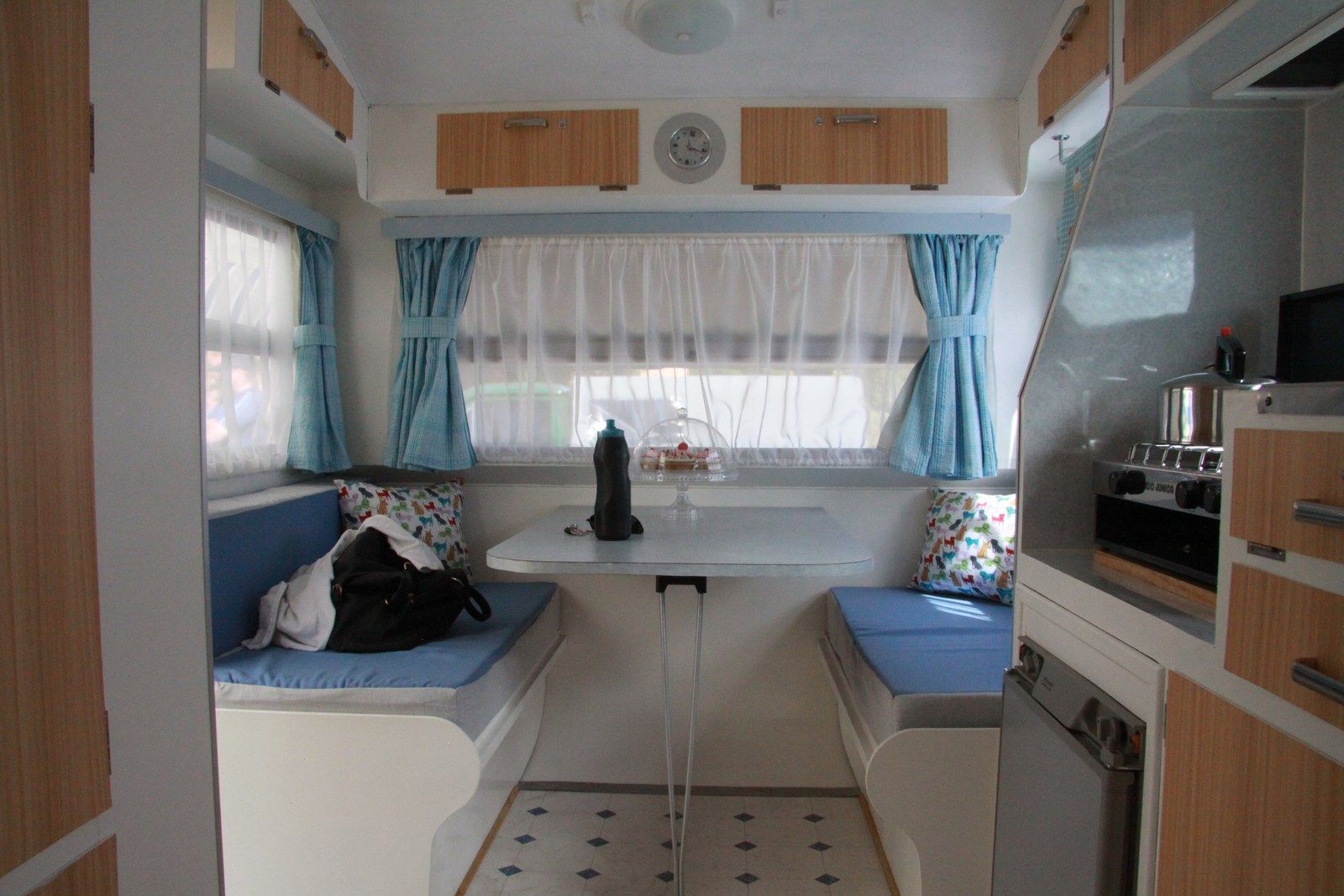 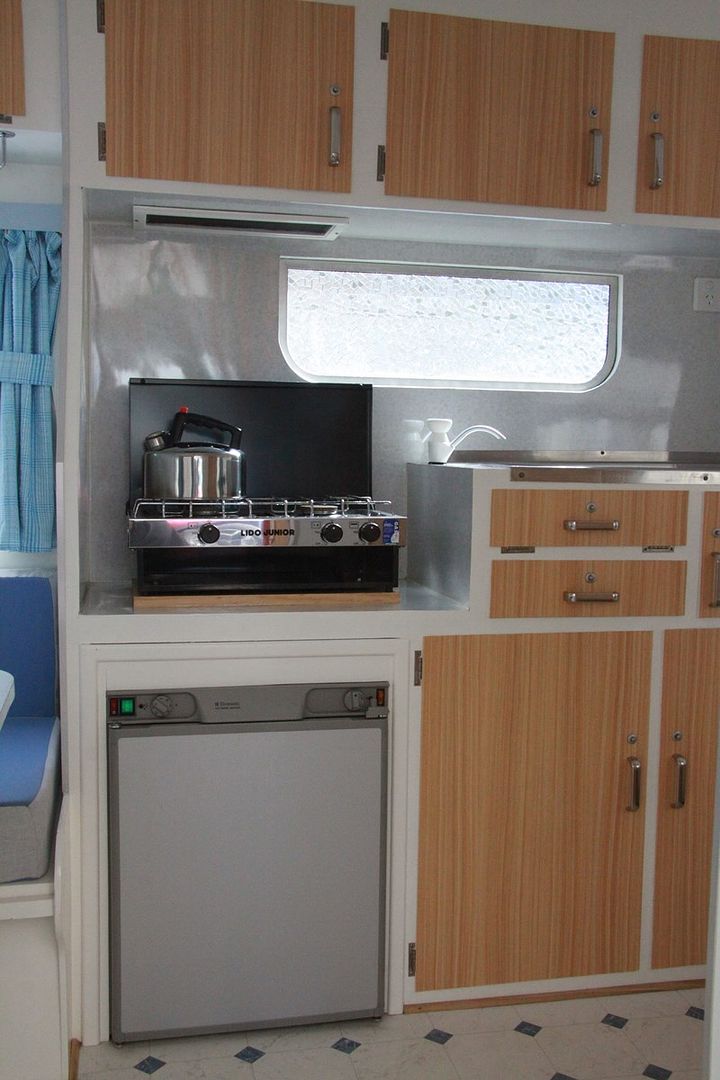  The history of the van is that Ian and Sharon found it being used as accommodation and storage in a horse paddock. Internally the van was badly damaged by someone wielding either an axe or a sledge hammer, resulting in a lot of the lower cupboards having been smashed. Some of the frame was also badly rotted. Ian and Sharon have rebuilt the van by removing all the cladding and repairing the frame, rebuilding the lower cupboards and stove alcove as close as possible to the original using the broken pieces as templates, and repainting throughout. The double awning windows, side flashes (although now a different colour), upper cupboards and some of the lower cupboards are all original. However, the fronts of the cupboards have been resurfaced, and I think from someone's comment that the spats may have been added. The origins and make of the van are unknown, although Ian and Sharon have wondered if it was home built. If that is the case, then it has been done very well indeed. The roofline of the caravan is quite unusual with the sharp edge and overhang at the front and rear and suggests Schrader or one of the South Australian builders from the 60's. The fact that the van has double awning windows all around is also unusual for what appears to be its period. Double awnings were introduced on caravans in 1963/4, so I'm thinking that this van can be no earlier than that.
If you are able to tell us anything more about this caravan please post on this thread using the reference number so that we can connect your post to the caravan concerned.
|
|